AMPK
AMPK (5'AMP-activated protein kinase) acts as a metabolic master switch regulating several intracellular systems including the cellular uptake of glucose, the β-oxidation of fatty acids and the biogenesis of GLUT4 (glucose transporter 4) and mitochondria.
Produkte für AMPK
- Bestell-Nr. Artikelname Informationen
-
GC35124
3α-Hydroxymogrol
3α-Hydroxymogrol ist ein aus Siraitia grosvenorii Swingle isoliertes Triterpenoid, das als potenter AMPK-Aktivator wirkt und die AMPK-Phosphorylierung verstärkt.
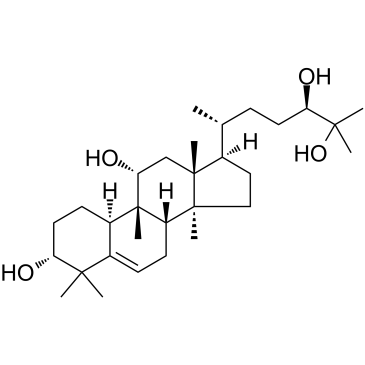
-
GC13992
3-Guanidinopropionic Acid
RGX-202 (3-GuanidinopropionsÄure) ist ein oraler kleinmolekularer SLC6A8-Transporter-Inhibitor. RGX-202 hemmt den Kreatinimport in vitro und in vivo stark, reduziert die intrazellulÄren Phosphokreatin- und ATP-Spiegel und induziert Tumorapoptose. RGX-202 kann fÜr die Erforschung von Krebs und Duchenne-Muskeldystrophie verwendet werden.
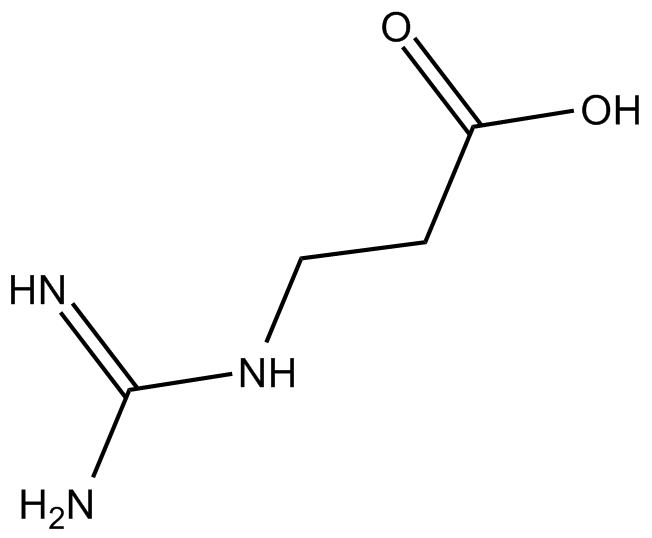
-
GN10093
6-gingerol
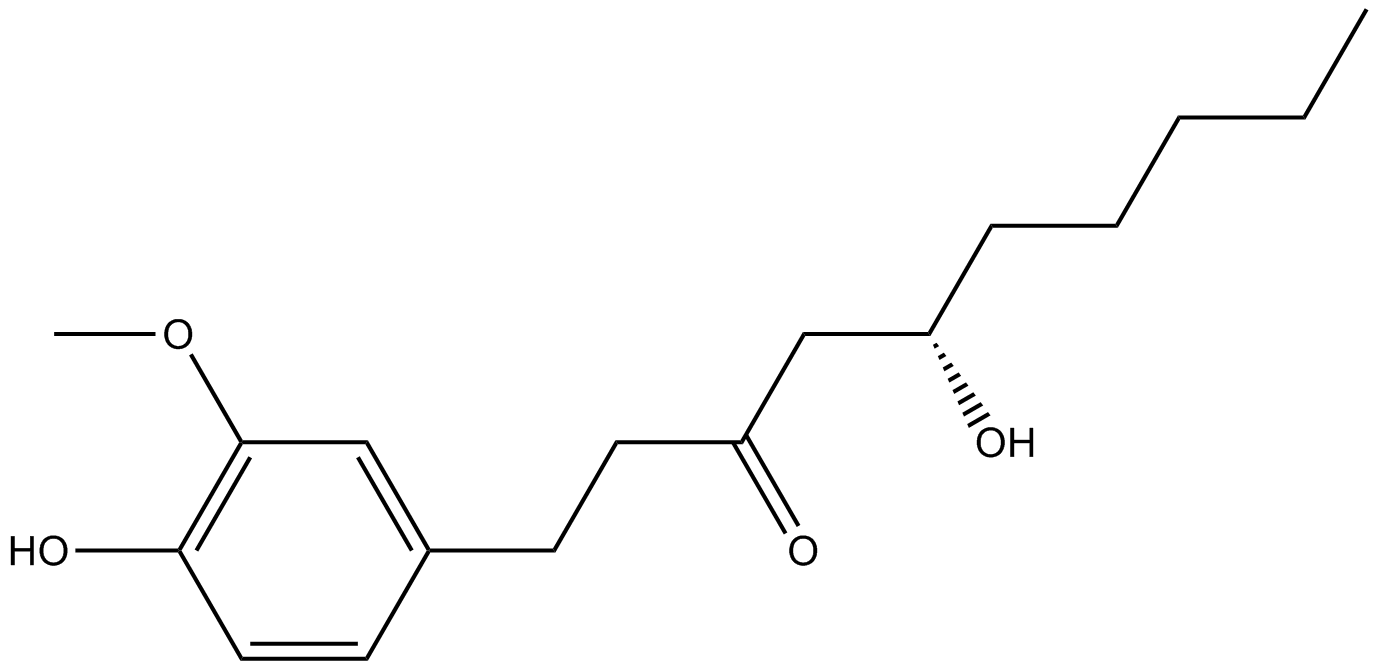
-
GC31348
7-Methoxyisoflavone
7-Methoxyisoflavon ist ein Isoflavon-Derivat und auch ein Aktivator der Adenosinmonophosphat-aktivierten Proteinkinase (AMPK).
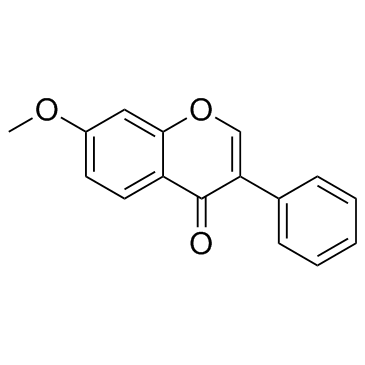
-
GC11234
A-769662
Ein direkter Aktivator von AMPK
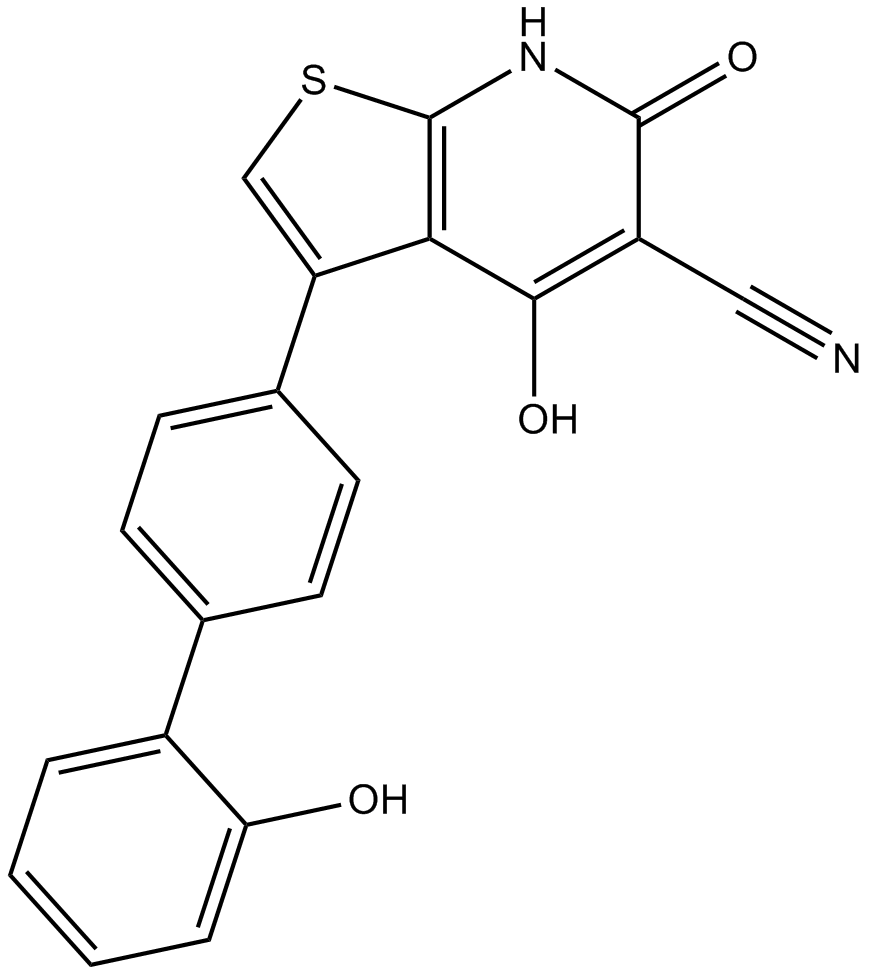
-
GC10518
AICAR
Ein Aktivator von AMPK
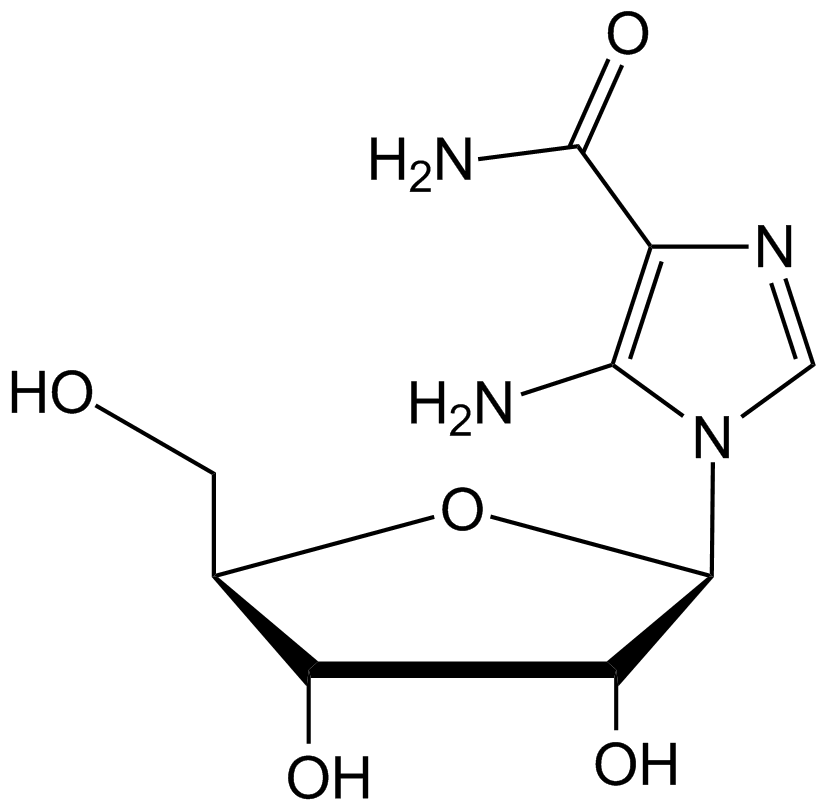
-
GC10580
AICAR phosphate
AICAR-Phosphat (Acadesine-Phosphat) ist ein Adenosin-Analogon und ein AMPK-Aktivator. AICAR-Phosphat reguliert den Glukose- und Lipidstoffwechsel und hemmt proinflammatorische Zytokine und die iNOS-Produktion. AICAR-Phosphat ist auch ein Autophagie-, YAP- und Mitophagie-Hemmer.
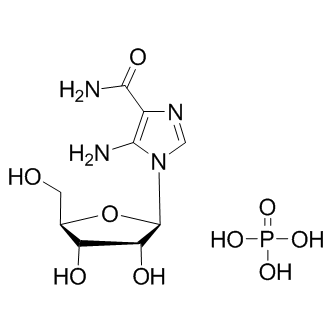
-
GC66024
Aldometanib
Aldometanib (LXY-05-029) ist ein oral aktiver Aldolase-Inhibitor. Aldometanib kann die lysosomale Adenosinmonophosphat-aktivierte Proteinkinase (AMPK) aktivieren und den Blutzucker senken. Aldometanib kann zur Erforschung der metabolischen HomÖostase eingesetzt werden.
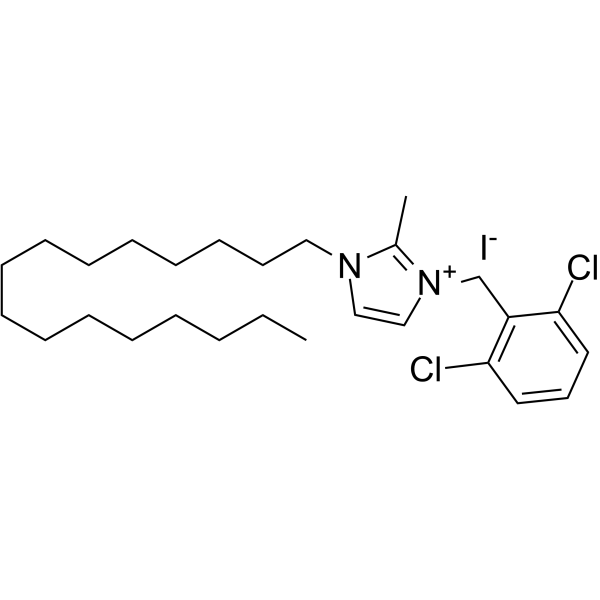
-
GC42776
Amarogentin
Amarogentin ist ein Secoiridoid-Glykosid, das hauptsÄchlich aus Swertia- und Gentiana-Wurzeln gewonnen wird.

-
GC11190
AMPK activator
Der AMPK-Aktivator ist ein zellgÄngiger AMPK-Aktivator und hemmt teilweise den mitochondrialen Komplex I. In multiplen Myelomzellen hemmt der AMPK-Aktivator das Zellwachstum.
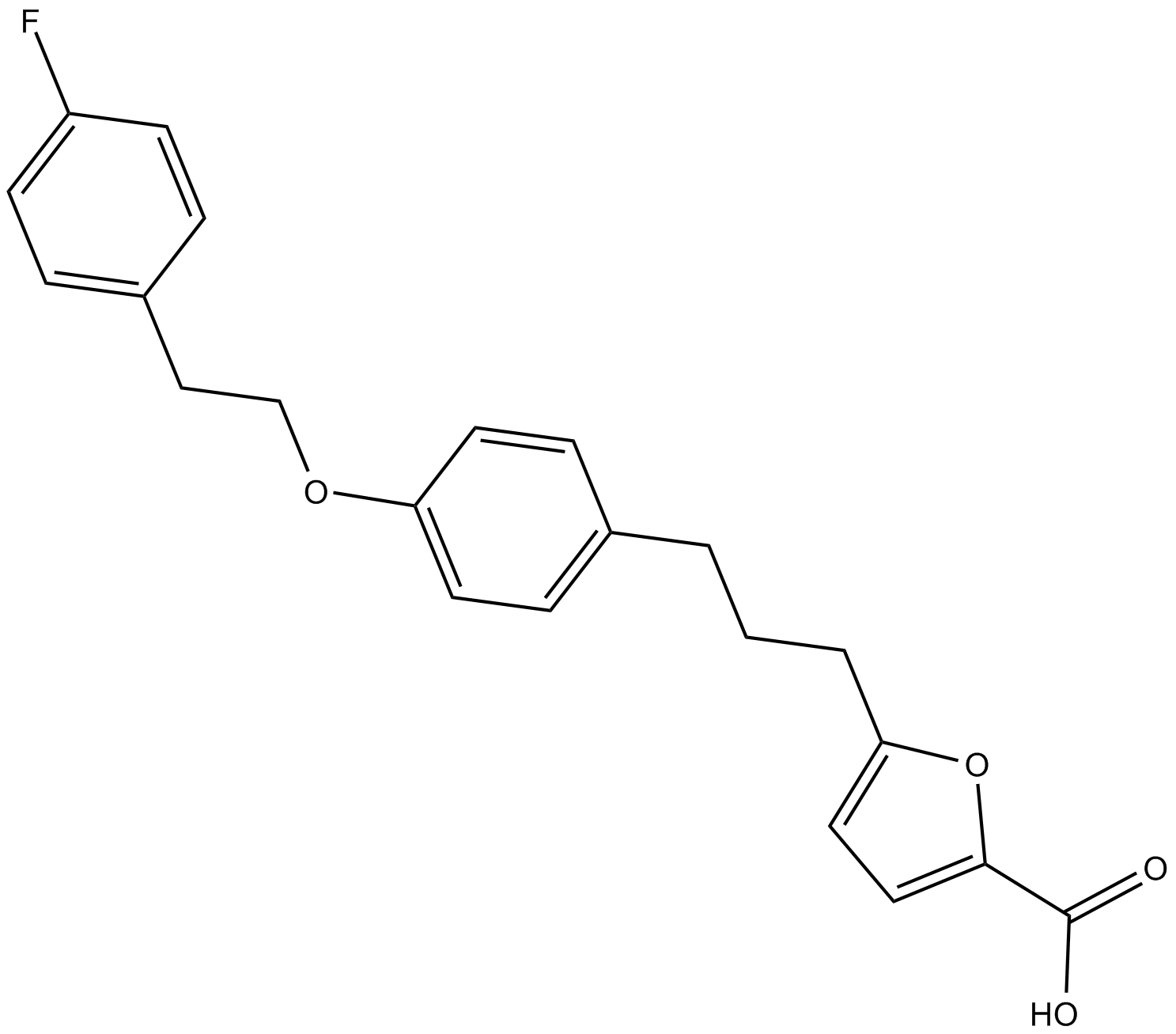
-
GC35327
AMPK activator 1
AMPK-Aktivator 1 ist ein aus Patent WO2013116491A1 extrahierter AMPK-Aktivator, Verbindung Nr. 1-75, hat einen EC50 von < 0,1 μM.
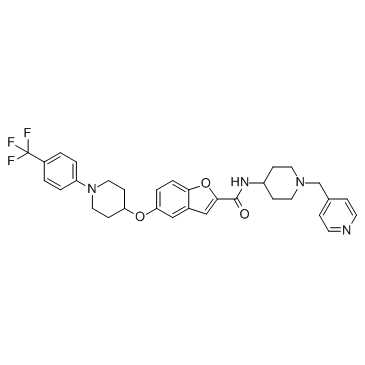
-
GC62841
AMPK activator 4
AMPK-Aktivator 4 ist ein potenter AMPK-Aktivator ohne Hemmung des mitochondrialen Komplexes I.
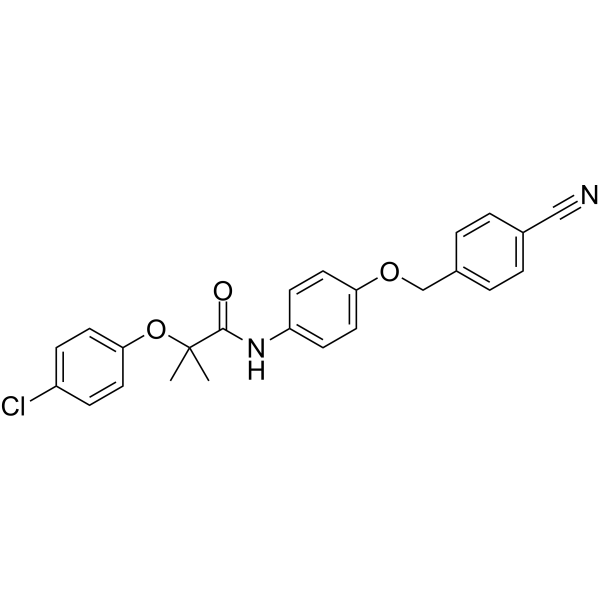
-
GC67961
AMPK-IN-3
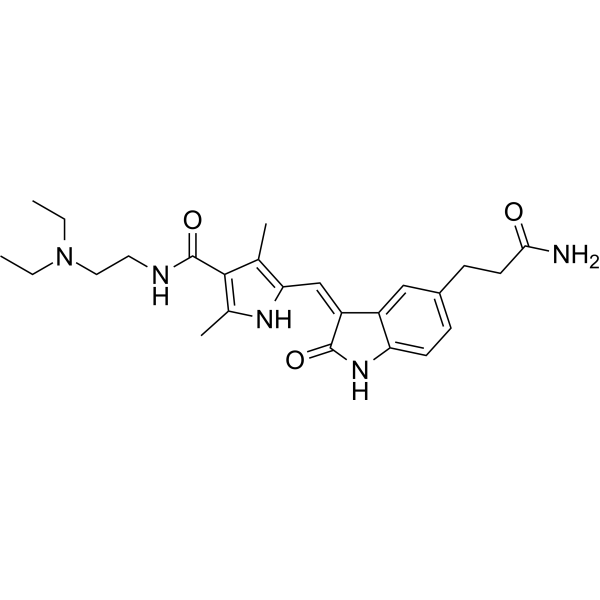
-
GC16534
Ampkinone
Ampkinon ist ein indirekter AMP-aktivierter Proteinkinase (AMPK)-Aktivator.
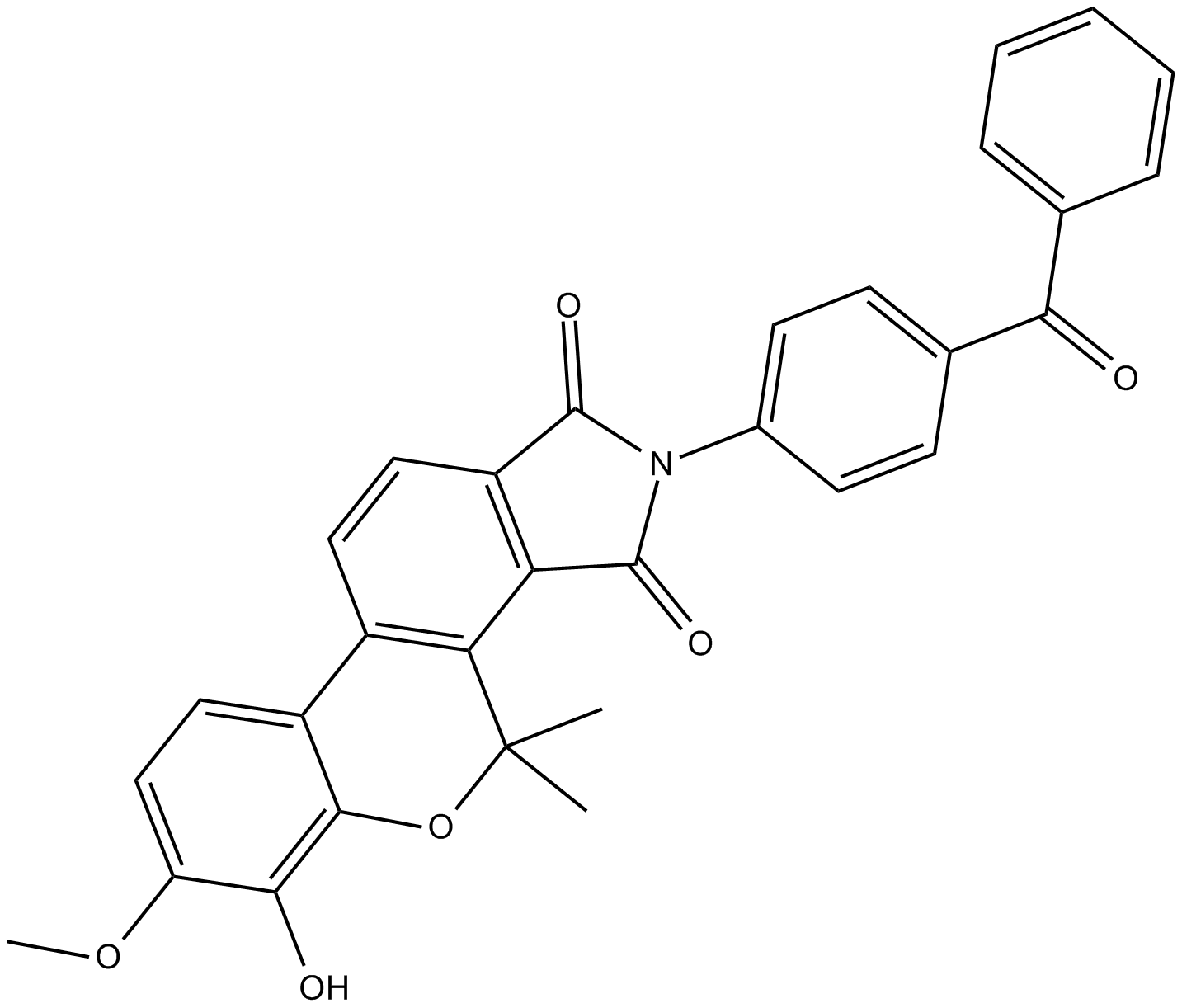
-
GC67772
BAY-3827
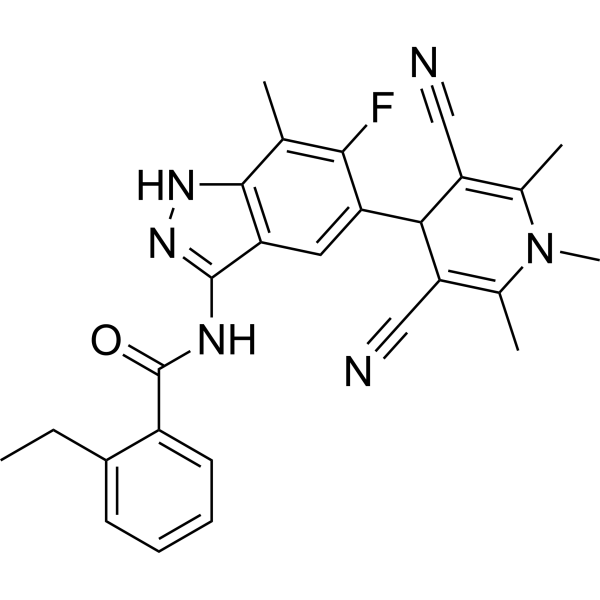
-
GC62135
BC1618
BC1618, eine oral aktive Fbxo48-hemmende Verbindung, stimuliert die Ampk-abhÄngige SignalÜbertragung (indem es aktiviertes pAmpkα am Fbxo48-vermittelten Abbau hindert).
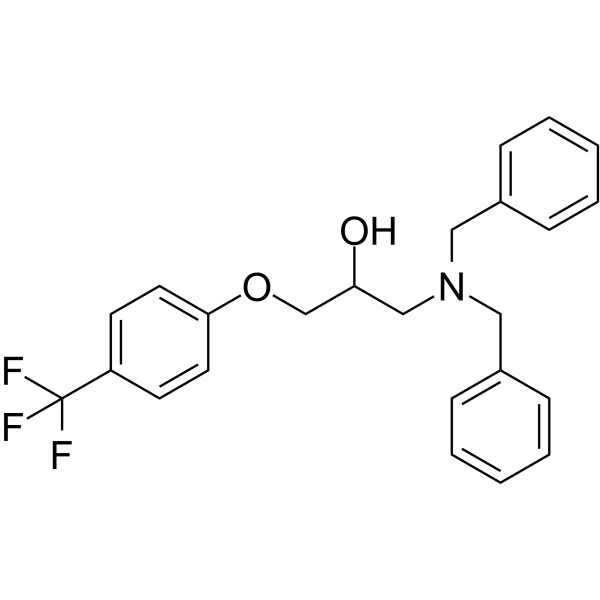
-
GC42987
Buformin (hydrochloride)
Buformin (Hydrochlorid) (1-Butylbiguanid-Hydrochlorid), ein starker AMPK-Aktivator, wirkt als oral aktives Biguanid-Antidiabetikum. Buformin (Hydrochlorid) verringert die hepatische Glukoneogenese und senkt die Blutzuckerproduktion in vivo. Buformin (Hydrochlorid) hat auch Anti-Krebs-Aktivitäten und wird in Krebsstudien (wie Gebärmutterhalskrebs und Brustkrebs, et al.) angewendet.

-
GC31383
Chitosan oligosaccharide COS
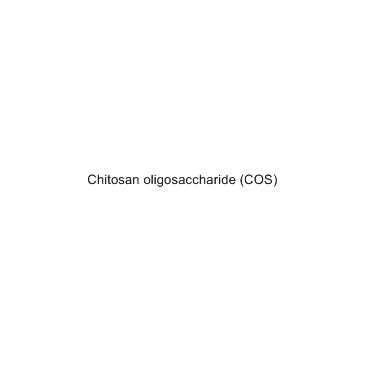
-
GN10222
Cimigenol-3-O-α-L-arabinoside
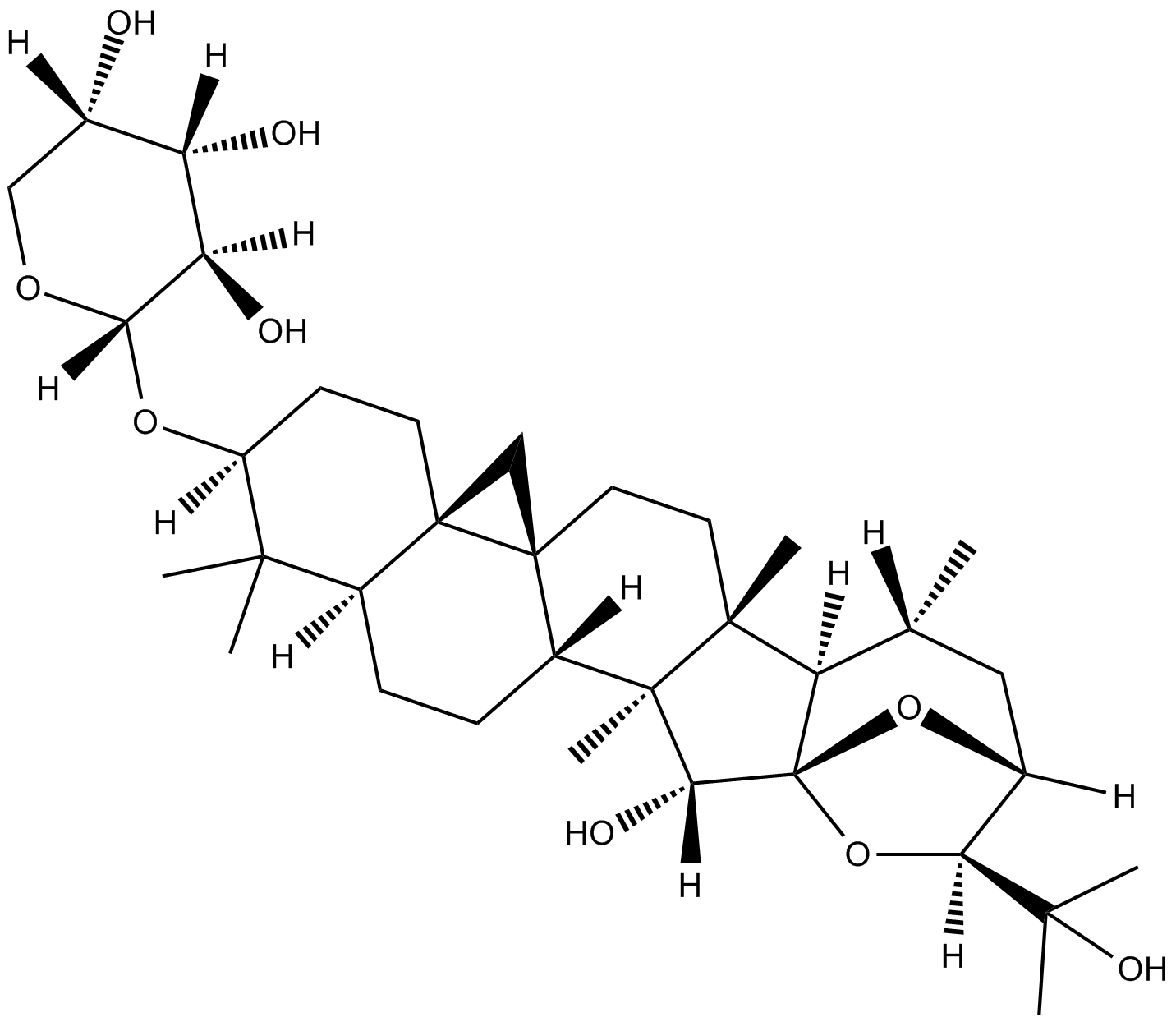
-
GC62548
COH-SR4
COH-SR4 ist ein AMPK-Aktivator.
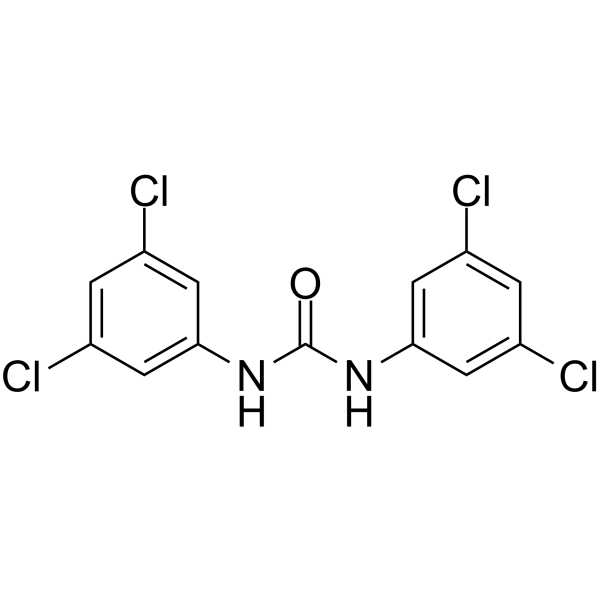
-
GC30056
Danthron (Dantron)
Danthron (Dantron) ist ein Naturprodukt, das aus dem Rhabarber der traditionellen chinesischen Medizin gewonnen wird. Danthron (Dantron) wirkt bei der Regulierung des Glukose- und Lipidstoffwechsels durch Aktivierung von AMPK.
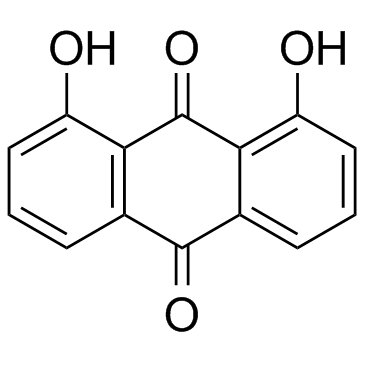
-
GC38101
Demethyleneberberine
Demethyleneberberine (DMB), as a natural active component of medicinal plant Cortex phellodendri chinensis, has favorable bioactivity.
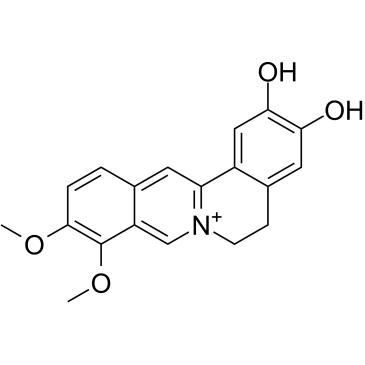
-
GC17243
Dorsomorphin (Compound C)
Dorsomorphin (Verbindung C) (Verbindung C) ist ein selektiver und ATP-kompetitiver AMPK-Inhibitor (Ki = 109 nM in Abwesenheit von AMP). Dorsomorphin (Verbindung C) (BML-275) hemmt selektiv die BMP-Typ-I-Rezeptoren ALK2, ALK3 und ALK6. Dorsomorphin (Verbindung C) induziert Autophagie.
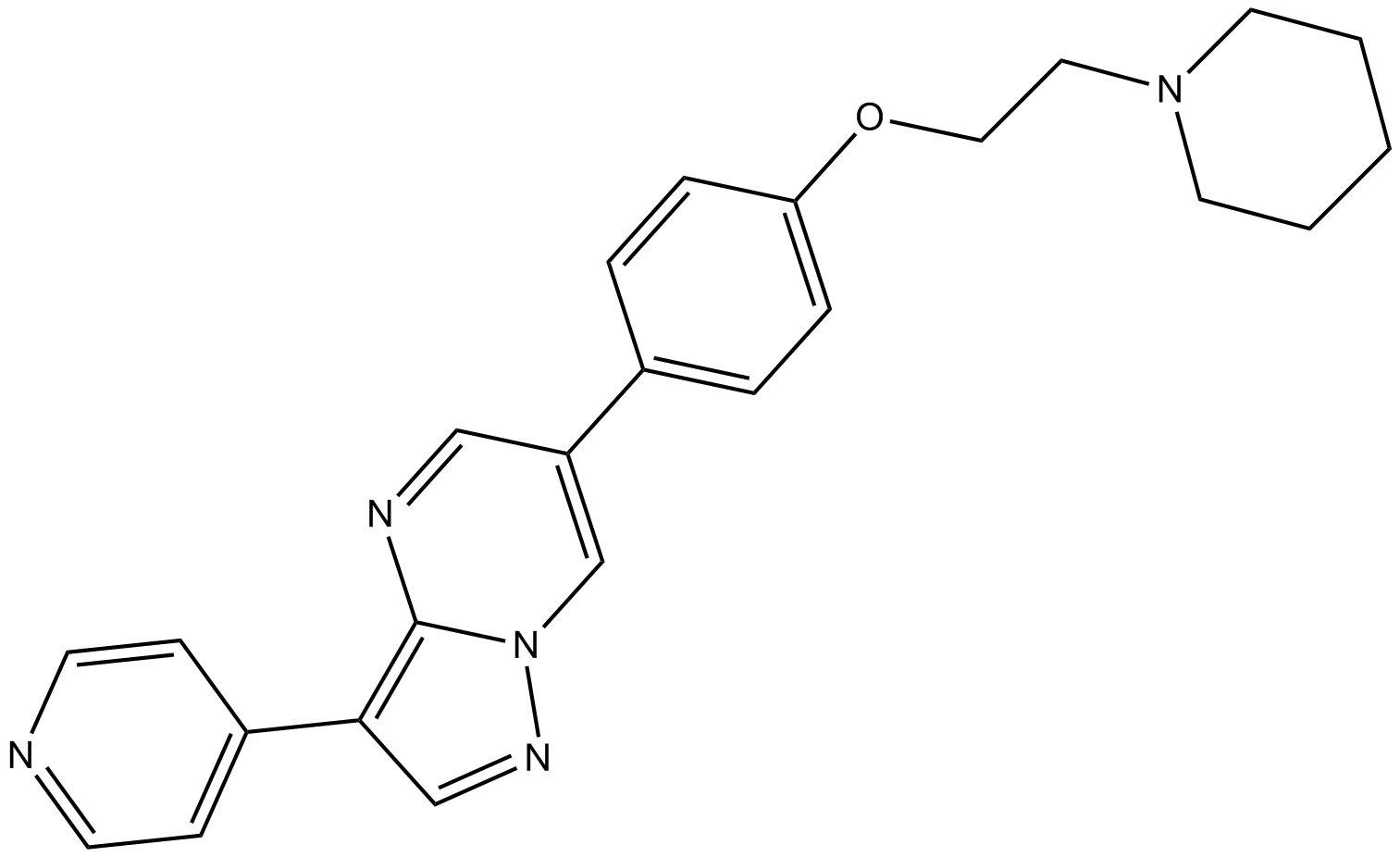
-
GC12560
Dorsomorphin (Compound C) 2HCl
Dorsomorphin (Compound C) 2HCl (BML-275 Dihydrochlorid; Compound C Dihydrochlorid) ist ein potenter, selektiver und ATP-kompetitiver AMPK-Inhibitor mit einer Ki von 109 nM. Dorsomorphin (Compound C) 2HCl hemmt den BMP-Signalweg durch die Ausrichtung auf die Typ-I-Rezeptoren ALK2, ALK3 und ALK6. Dorsomorphin (Compound C) 2HCl induziert Autophagie.
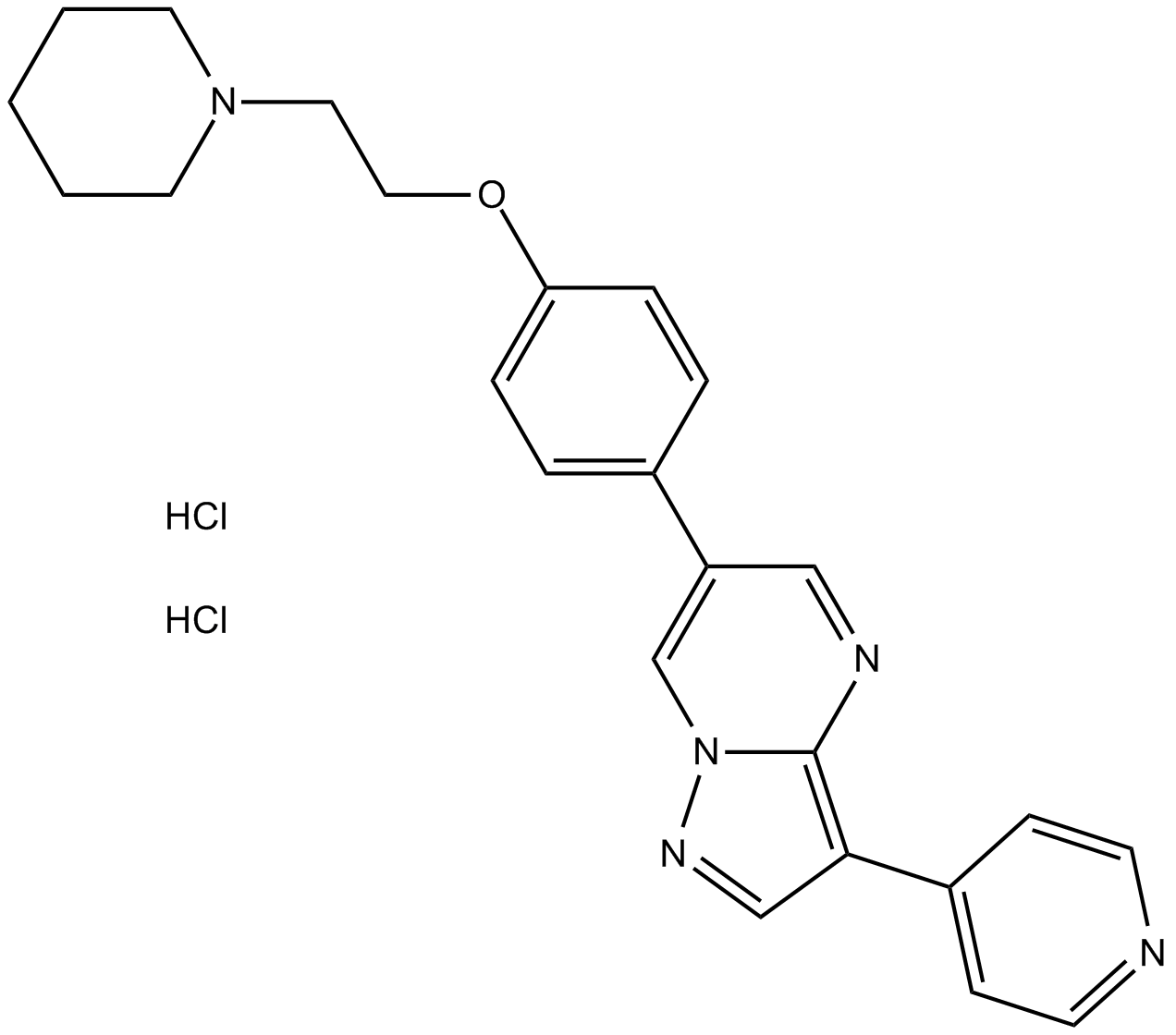
-
GC17567
Doxorubicin (Adriamycin) HCl
Doxorubicin (Hydroxydaunorubicin) Hydrochlorid, ein zytotoxisches Anthracyclin-Antibiotikum, ist ein Chemotherapeutikum zur Behandlung von Krebs.
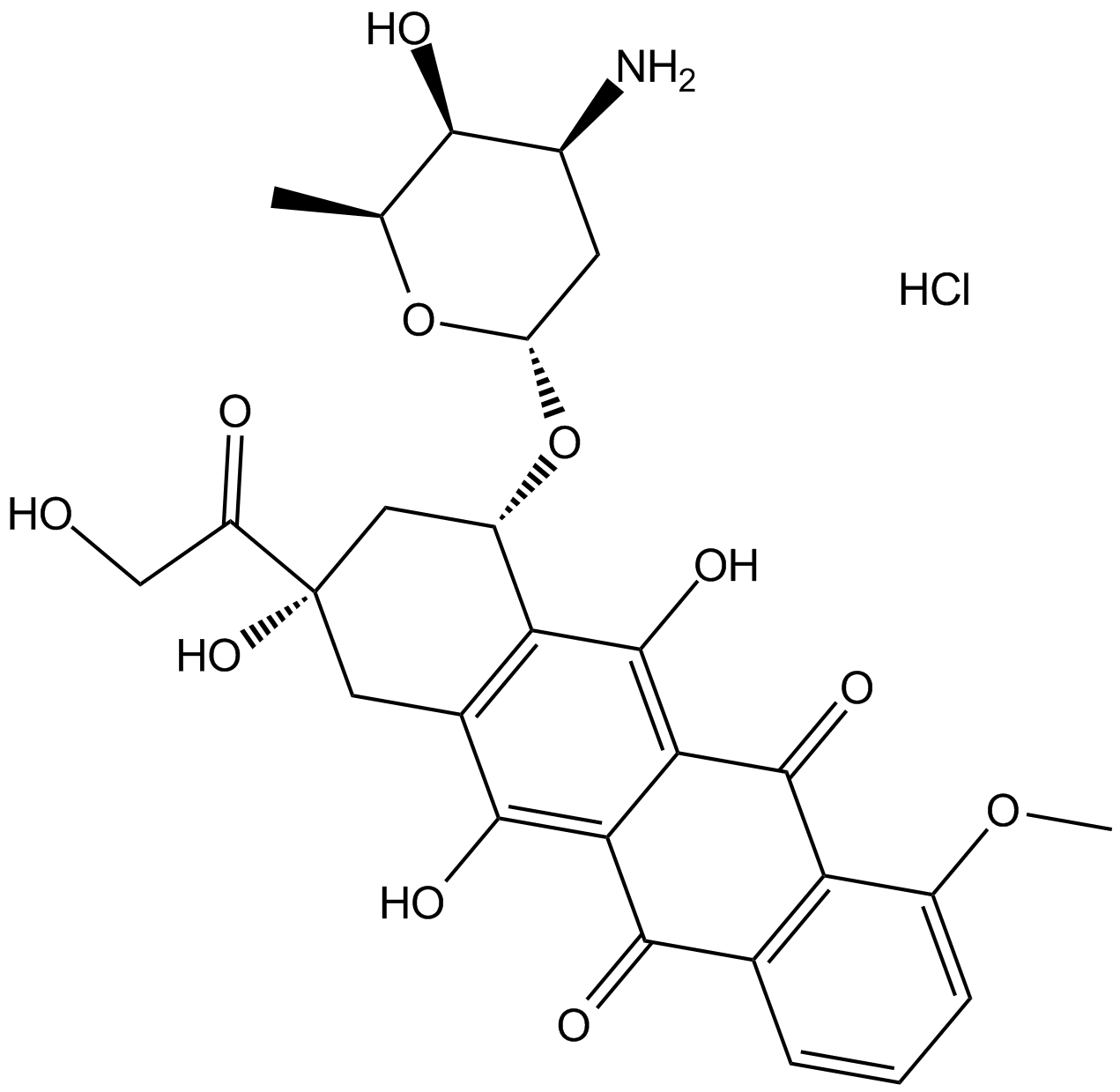
-
GC39377
EB-3D
EB-3D ist ein potenter und selektiver Hemmer der Cholinkinase α (ChoKα) mit einem IC50-Wert von 1 μM fÜr ChoKα1. EB-3D Übt Wirkungen auf die ChoKα-Expression, die AMPK-Aktivierung, die Apoptose, den Stress des endoplasmatischen Retikulums und den Lipidstoffwechsel aus. EB-3D zeigt eine starke antiproliferative AktivitÄt in einer Reihe von T-LeukÄmie-Zelllinien. Anti-Krebs-AktivitÄt.
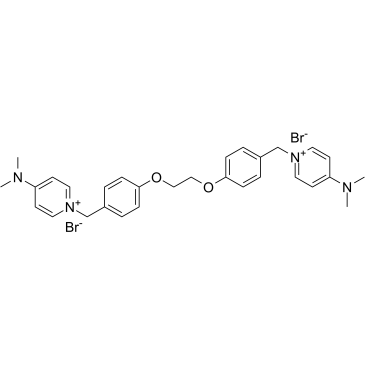
-
GC38422
Euphorbiasteroid
A tricyclic diterpene
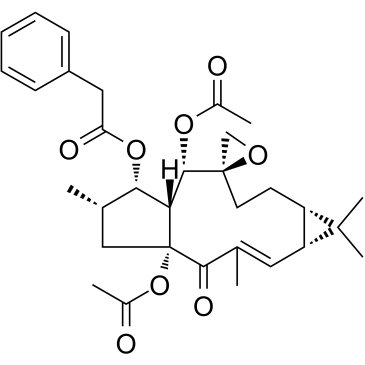
-
GC31411
EX229
EX229, ein Benzimidazol-Derivat, ist ein potenter und allosterischer Aktivator der AMP-aktivierten Proteinkinase (AMPK) mit Kds von 0,06 μM, 0,06 μM und 0,51 μM fÜr α1β1γ1, α2β1γ1 bzw. α1β2γ1 in der Biolayer-Interferometrie.
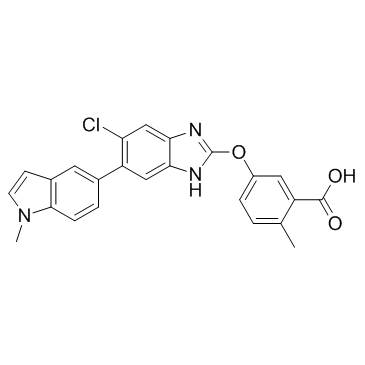
-
GC13466
Flufenamic acid
FlufenaminsÄure ist ein nicht-steroidales entzÜndungshemmendes Mittel, hemmt die Cyclooxygenase (COX), aktiviert AMPK und moduliert auch IonenkanÄle, blockiert ChloridkanÄle und L-Typ-Ca2+-KanÄle und moduliert nicht-selektive KationenkanÄle (NSC). , Aktivierung von K+ KanÄlen.
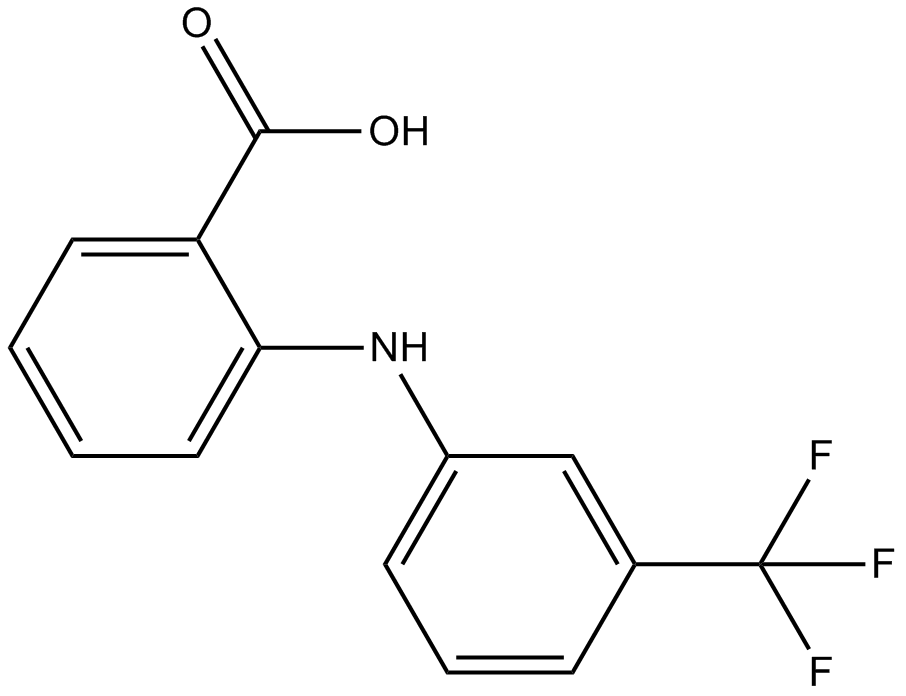
-
GC61855
Galegine hydrochloride
Galeginhydrochlorid, ein Guanidinderivat, trÄgt zur Gewichtsabnahme bei MÄusen bei.
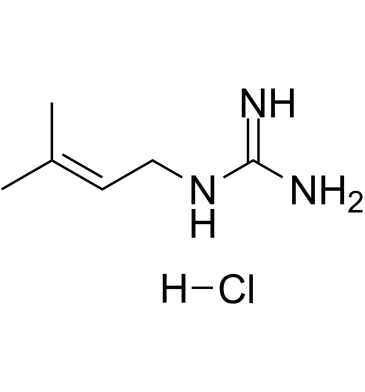
-
GN10473
Ginkgolide C
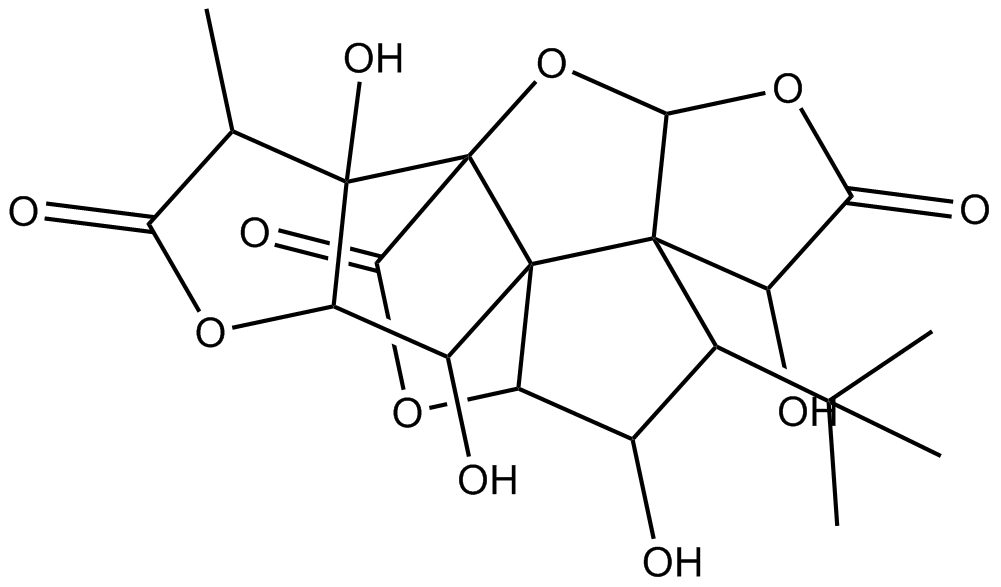
-
GC36178
Gomisin J
Gomisin J ist ein Lignan mit geringem Molekulargewicht, das in Schisandra chinensis vorkommt und dessen vasodilatatorische AktivitÄt nachgewiesen wurde.
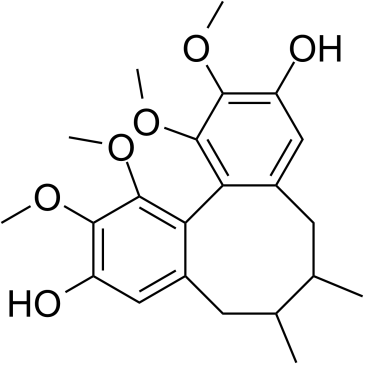
-
GC11724
GSK621
GSK621 ist ein spezifischer AMPK-Aktivator mit IC50-Werten von 13-30 μM fÜr AML-Zellen. GSK621 induziert Autophagie und Apoptose. GSK621 induziert die eiF2α-Phosphorylierung - ein Kennzeichen der UPR-Aktivierung.
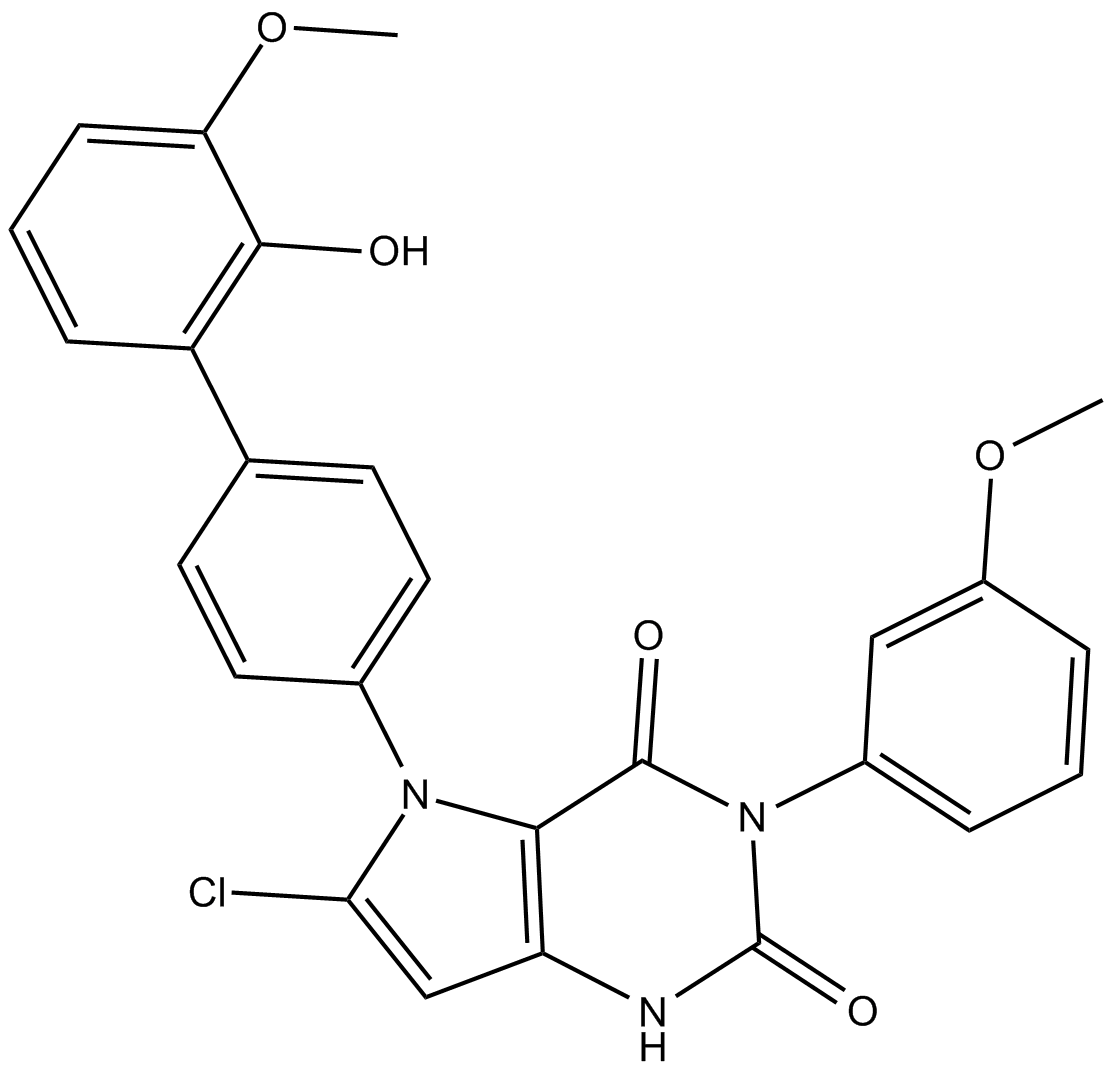
-
GC13696
GSK690693
GSK690693 ist ein ATP-kompetitiver Pan-Akt-Inhibitor mit IC50-Werten von 2 nM, 13 nM, 9 nM für Akt1, Akt2 bzw. Akt3. GSK690693 ist auch ein AMPK-Inhibitor, beeinflusst die Aktivität der Unc-51-ähnlichen Autophagie-aktivierenden Kinase 1 (ULK1) und hemmt stark die STING-abhängige IRF3-Aktivierung.
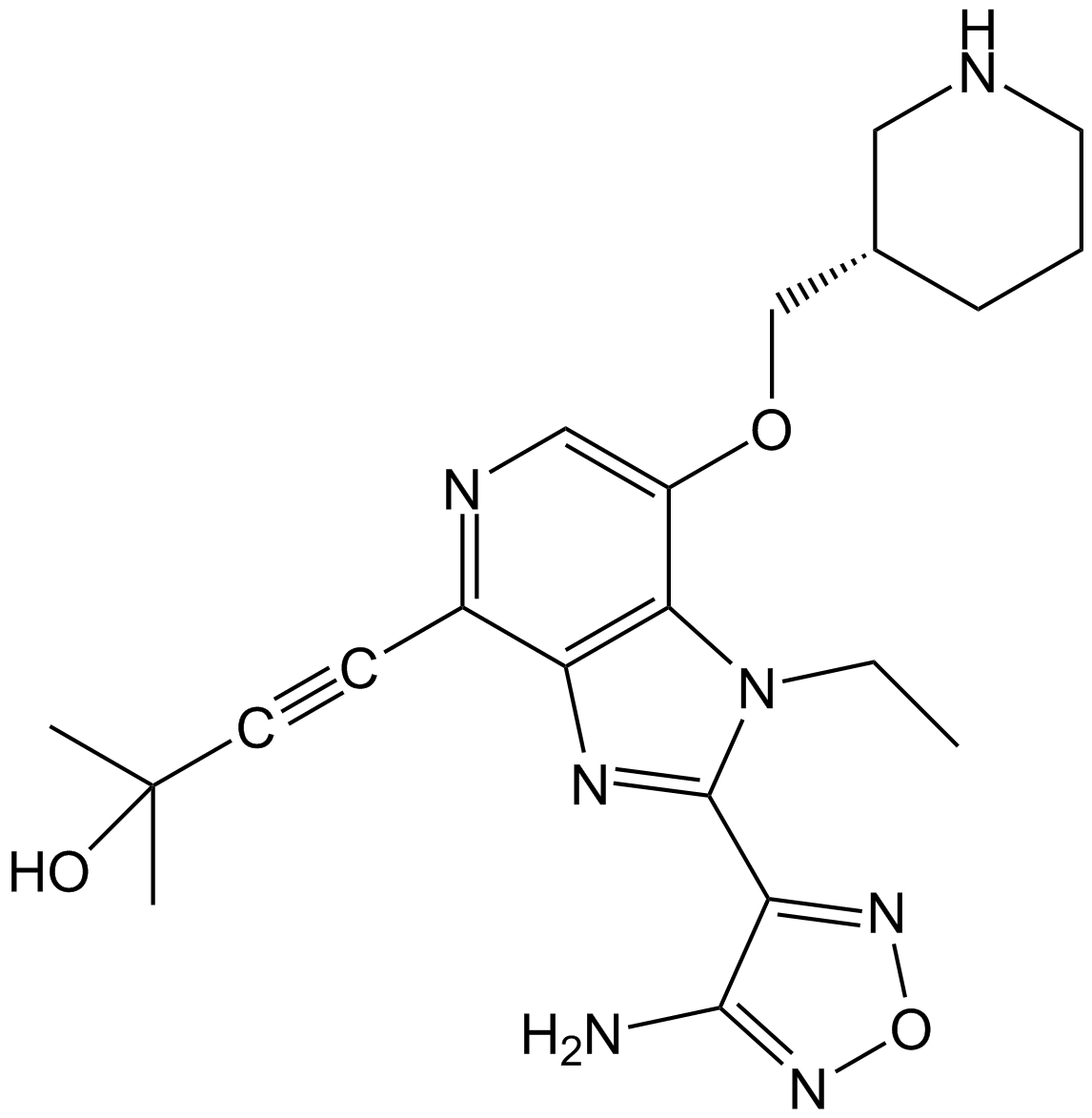
-
GC13185
HTH-01-015
HTH-01-015 ist ein selektiver NUAK1/ARK5-Inhibitor (IC50 betrÄgt 100 nM). HTH-01-015 hemmt NUAK1 mit >100-fach hÖherer Potenz als NUAK2 (IC50 von >10 μM).
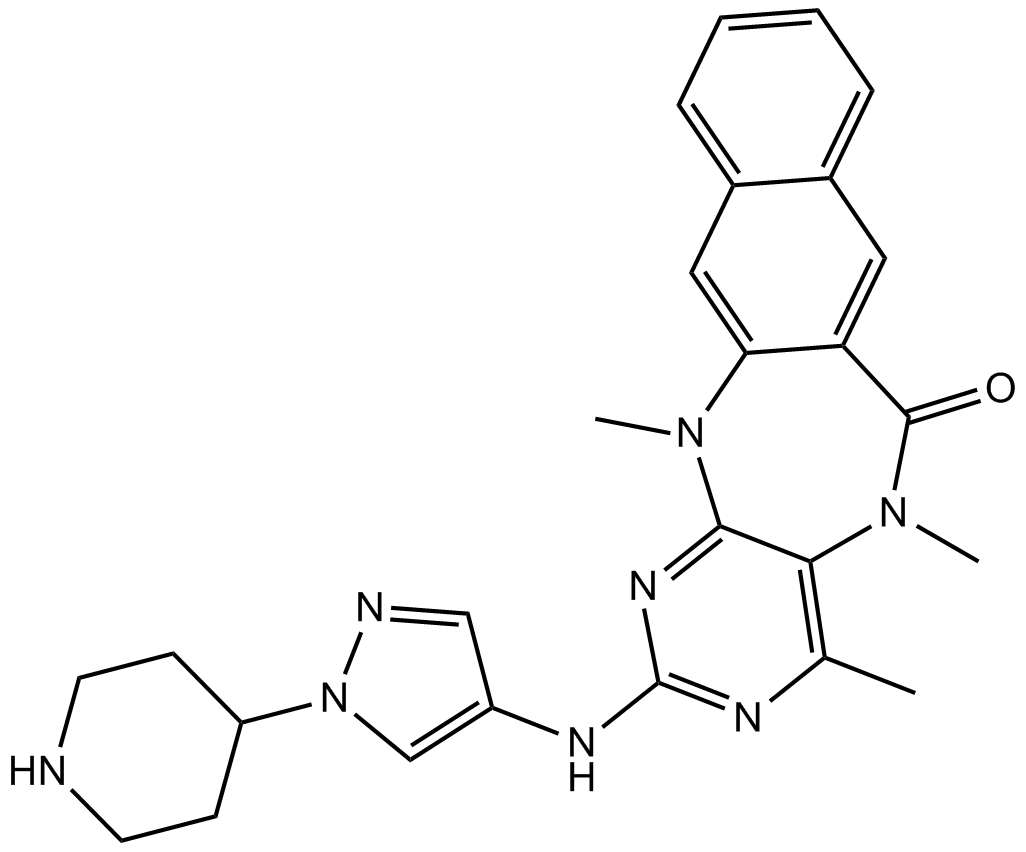
-
GC10576
Imeglimin
Imeglimin (EMD 387008) ist ein oraler blutzuckersenkender Wirkstoff.
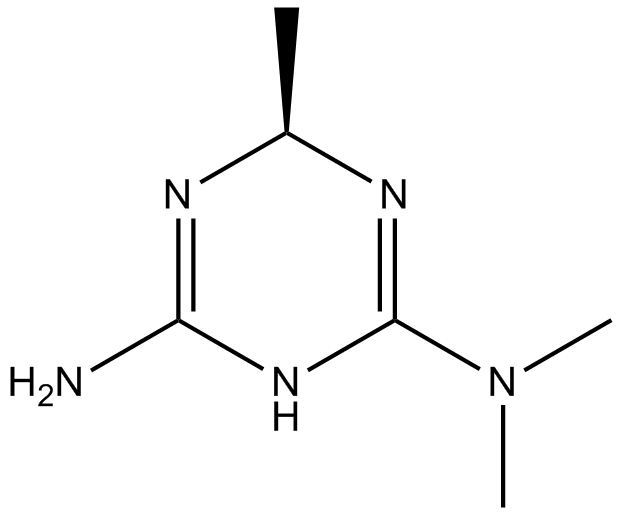
-
GC10956
Imeglimin hydrochloride
Imegliminhydrochlorid (EMD 387008) ist ein oral einzunehmender blutzuckersenkender Wirkstoff.
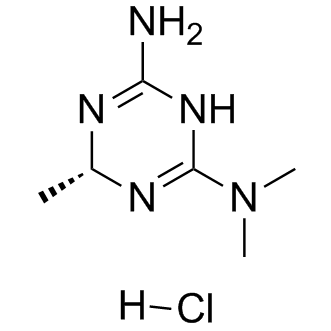
-
GC38209
Kahweol
Kahweol ist einer der Bestandteile des Kaffees von Coffea Arabica mit entzÜndungshemmenden, angiogenen und krebshemmenden AktivitÄten.
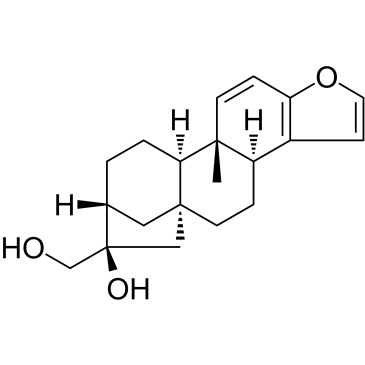
-
GC63934
Karanjin
Karanjin ist ein wichtiger aktiver Furanoflavonol-Bestandteil von Fordia cauliflora. Karanjin induziert die GLUT4-Translokation in Skelettmuskelzellen, indem es die AMPK-AktivitÄt erhÖht. Karanjin kann den Tod von Krebszellen durch Anhalten des Zellzyklus induzieren und die Apoptose verstÄrken.
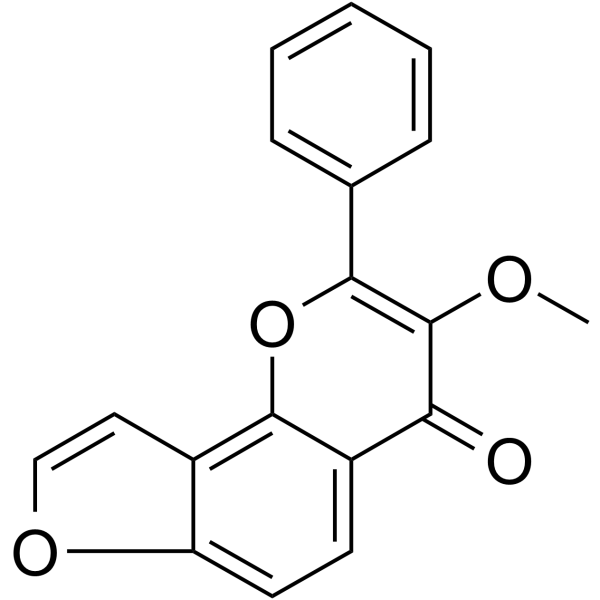
-
GC61029
Marein
Marein hat die neuroprotektive Wirkung aufgrund einer Verringerung der SchÄdigung der Mitochondrienfunktion und der Aktivierung des AMPK-Signalwegs.
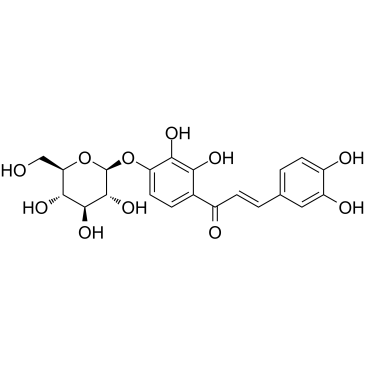
-
GC61045
Metformin D6 hydrochloride
Metformin D6-Hydrochlorid ist ein mit Deuterium gekennzeichnetes Metformin-Hydrochlorid.
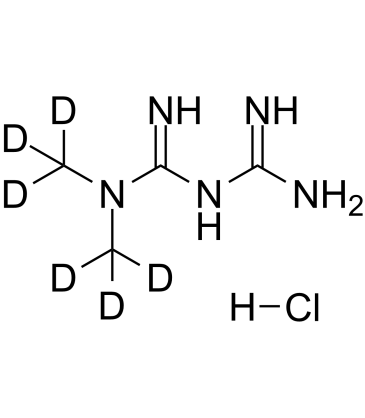
-
GC17443
Metformin HCl
Metformin HCl (1,1-Dimethylbiguanidhydrochlorid) hemmt die mitochondriale Atmungskette in der Leber, was zur Aktivierung von AMPK führt und die Insulinsensitivität für Typ-2-Diabetes-Forschung verbessert.
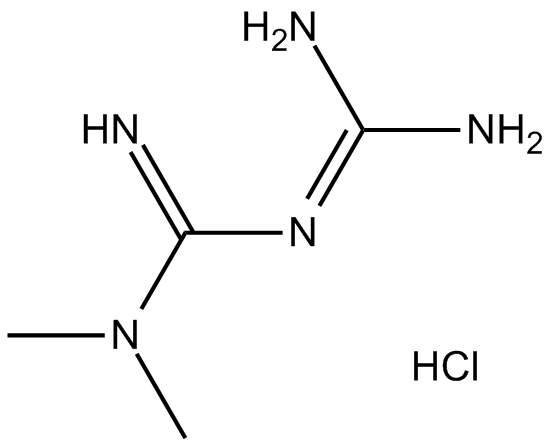
-
GC38815
Methyl cinnamate
Methylcinnamat (Methyl-3-phenylpropenoat), ein aktiver Bestandteil von Zanthoxylum armatum, ist ein weit verbreiteter natÜrlicher Aromastoff.
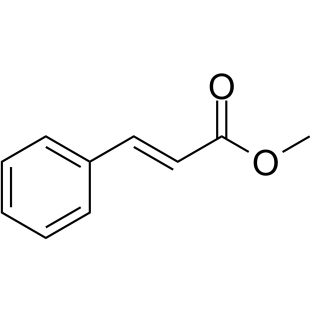
-
GC31361
MK-3903
MK-3903 ist ein potenter und selektiver AMP-aktivierter Proteinkinase (AMPK)-Aktivator mit einem EC50 von 8 nM.
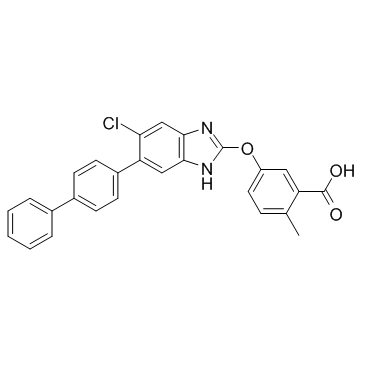
-
GC31470
MK8722
MK8722 ist ein potenter und systemischer Pan-AMPK-Aktivator.
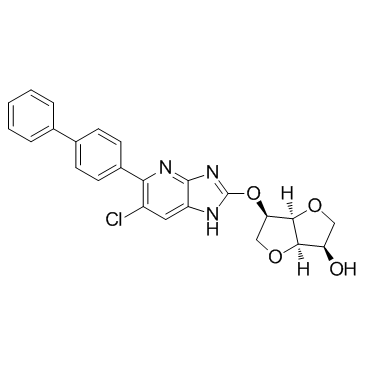
-
GC25648
MOTS-c
MOTS-c, a mitochondria-derived peptide (MDP), exerts antinociceptive and anti-inflammatory effects through activating AMPK pathway and inhibiting MAP kinases-c-fos signaling pathway.
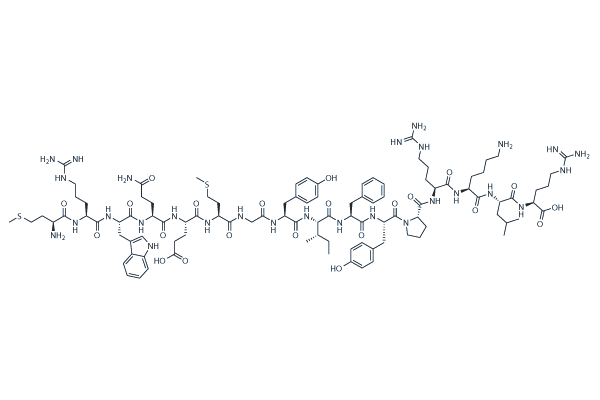
-
GC60258
MT 63-78
MT 63-78 ist ein spezifischer und potenter direkter AMPK-Aktivator mit einem EC50 von 25 μM. MT 63-78 induziert auch einen mitotischen Zellarrest und Apoptose. MT 63-78 blockiert das Wachstum von Prostatakrebs, indem es die Lipogenese und den mTORC1-Signalweg hemmt. MT 63-78 hat Antitumorwirkung.
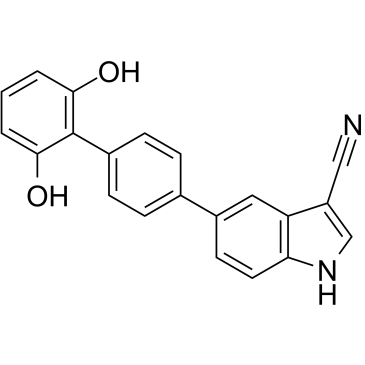
-
GC38567
Nepodin
Nepodin (Musizin) ist ein Inhibitorisolat der Chinonoxidoreduktase (PfNDH2) aus Rumex crispus.
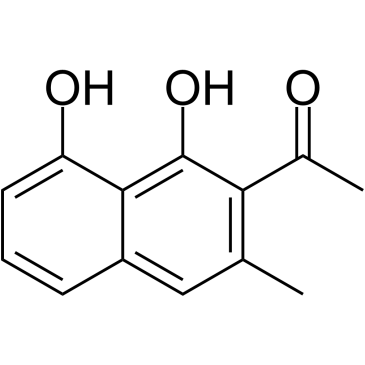
-
GC19269
O-304
O-304 ist ein erster oral verfÜgbarer Pan-AMPK-Aktivator seiner Klasse, der die AMPK-AktivitÄt erhÖht, indem er die Dephosphorylierung von pAMPK unterdrÜckt.
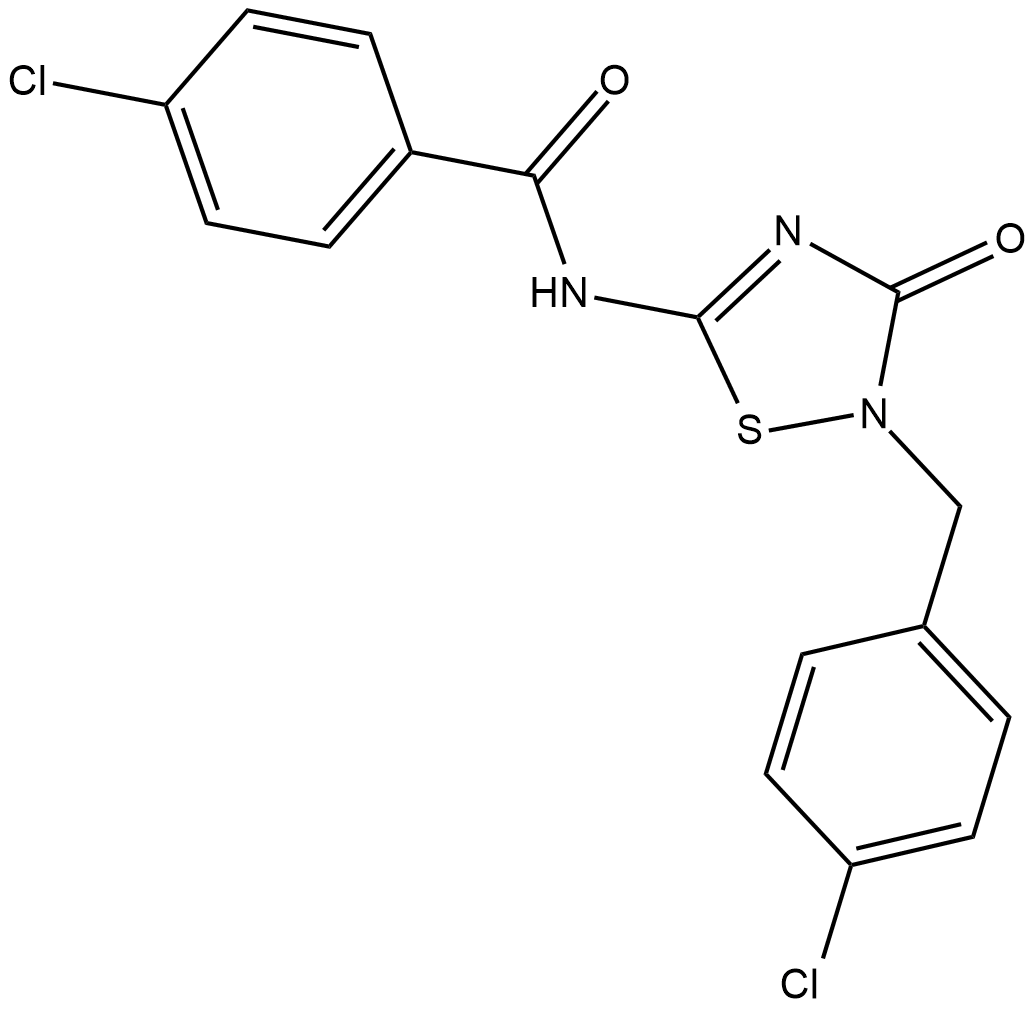
-
GC33765
Palmitelaidic Acid (9-trans-Hexadecenoic acid)
PalmitelaidinsÄure (9-trans-HexadecensÄure) (9-trans-HexadecensÄure) ist das trans-Isomer der PalmitoleinsÄure.
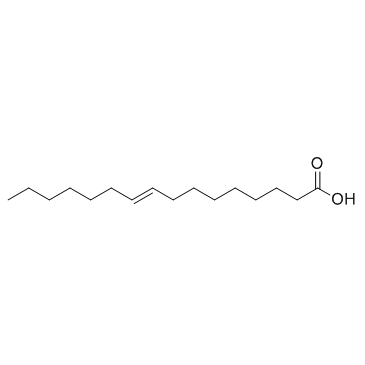
-
GC19286
PF-06409577
PF-06409577 ist ein potenter und selektiver allosterischer Aktivator der AMPK-α1β1γ1-Isoform mit einem EC50-Wert von 7 nM.
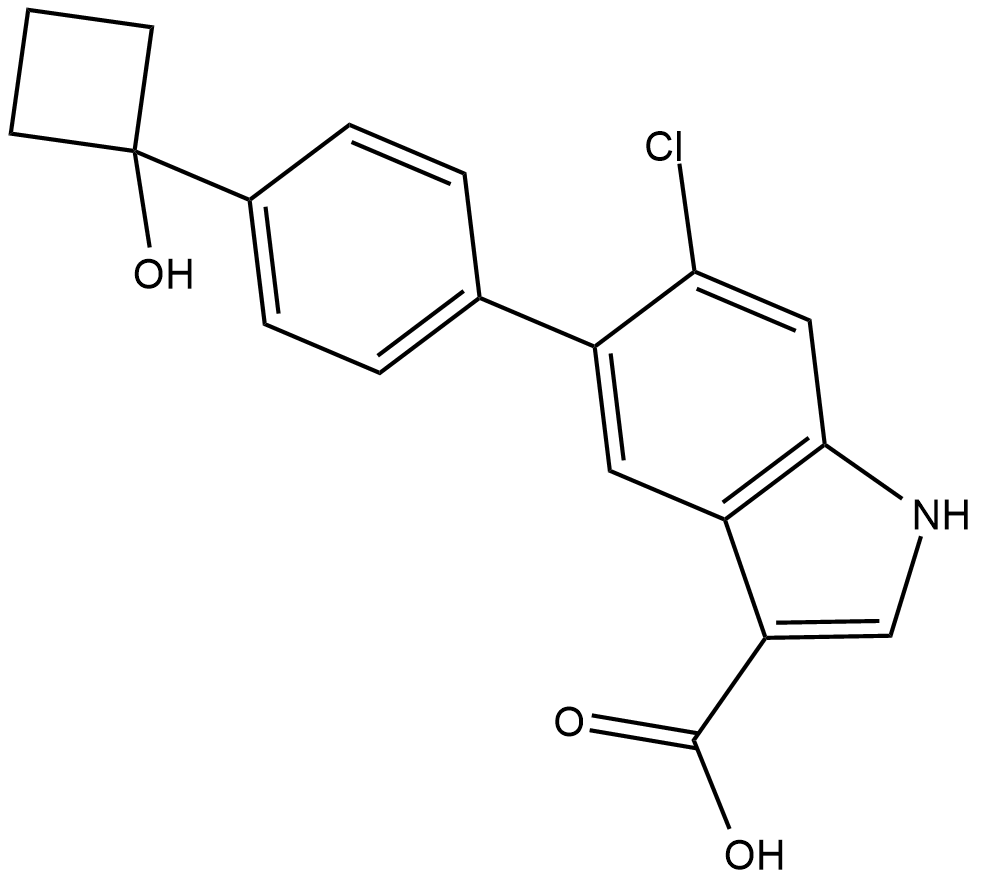
-
GC66002
PF-06685249
PF-06685249 (PF-249) ist ein potenter und oral aktiver allosterischer AMPK-Aktivator mit einem EC50 von 12 nM fÜr rekombinantes AMPK α1β1γ1. PF-06685249 kann fÜr die diabetische Nephropathieforschung verwendet werden.
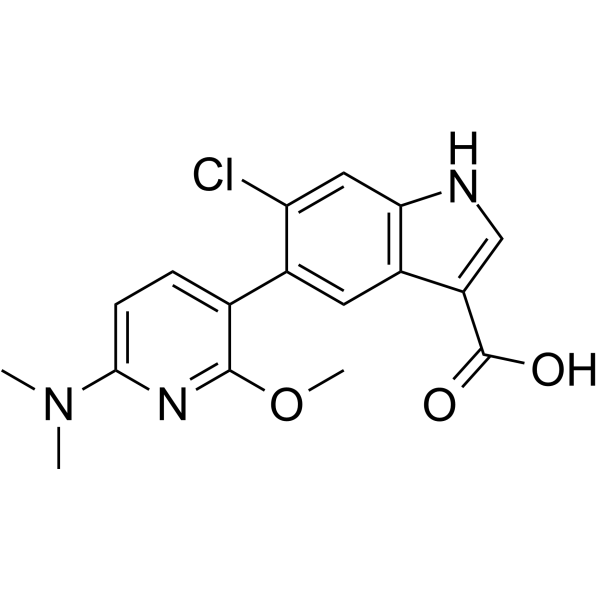
-
GC10461
Phenformin HCl
Phenformin HCl ist ein Antidiabetikum aus der Klasse der Biguanide, das die AMPK-AktivitÄt aktivieren kann.
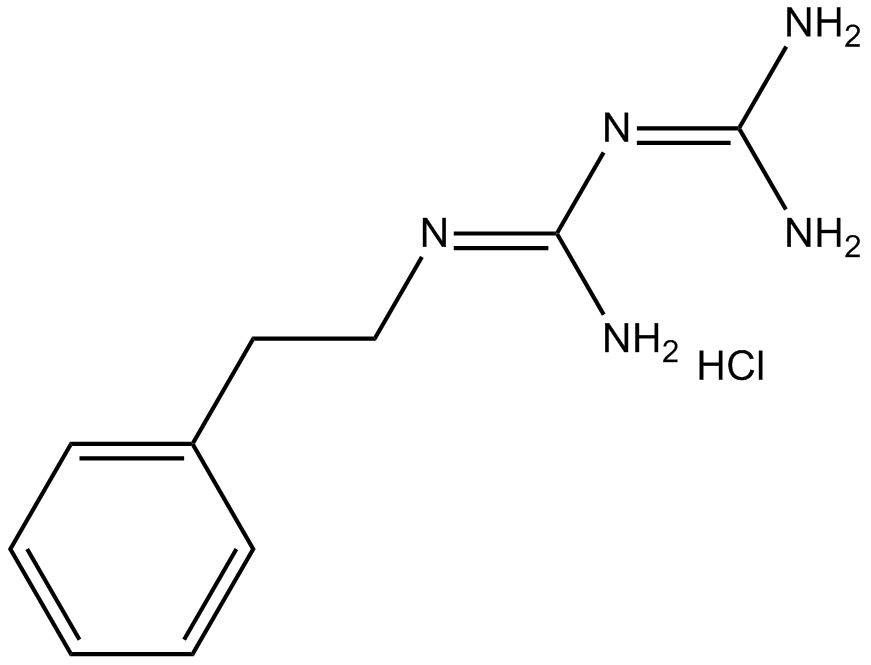
-
GN10592
Platycodin D
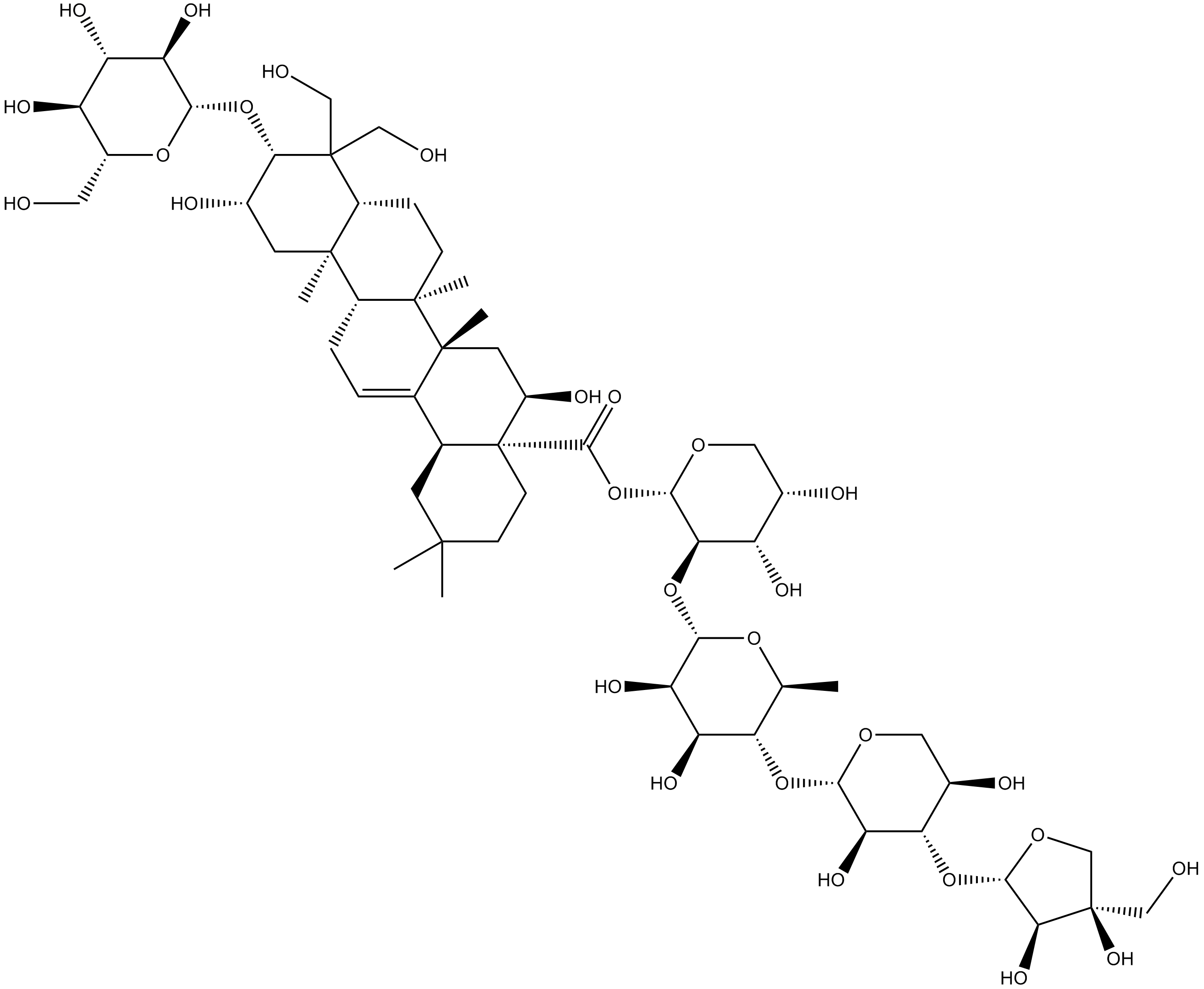
-
GC17204
PT 1
PT 1 ist ein AMPKα1-Aktivator, der die inaktiven verkürzten Formen von AMPKα1-Monomeren direkt aktiviert.
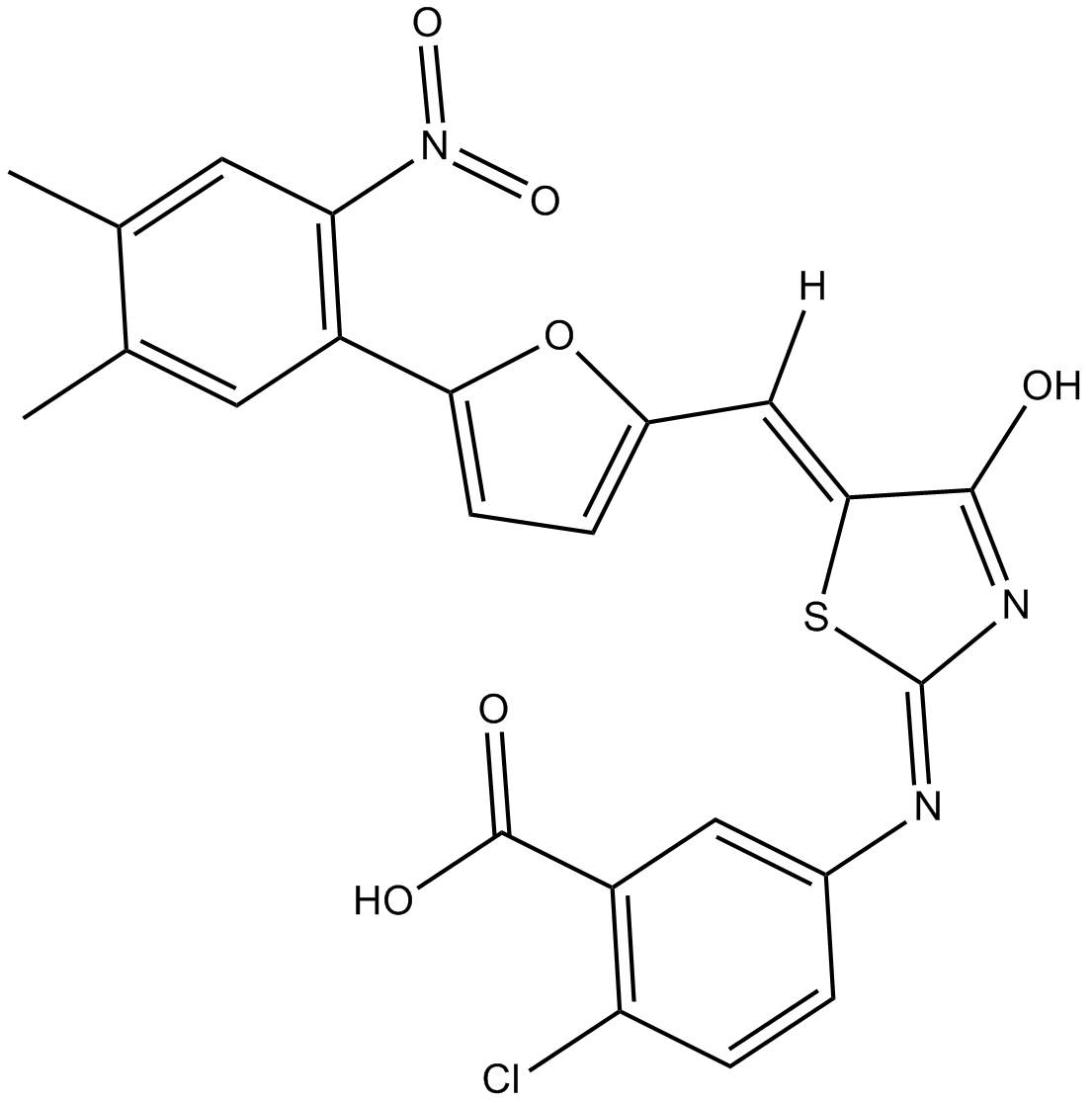
-
GC12324
RSVA 405
RSVA 405 ist ein potenter, oral aktiver Aktivator von AMPK mit einem EC50 von 1 μM.
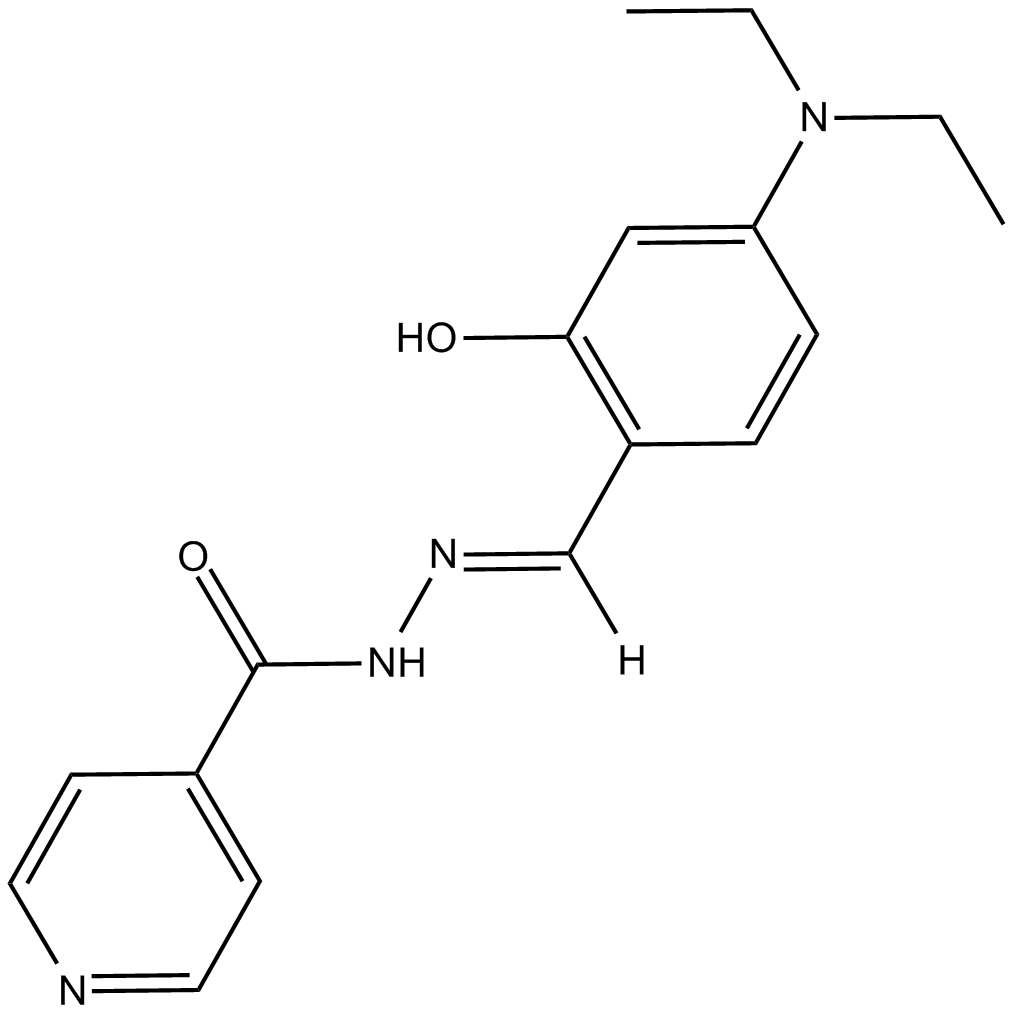
-
GC12364
SAMS Peptide
SAMS-Peptid-Peptid ist ein spezifisches Substrat fÜr die AMP-aktivierte Proteinkinase (AMPK).
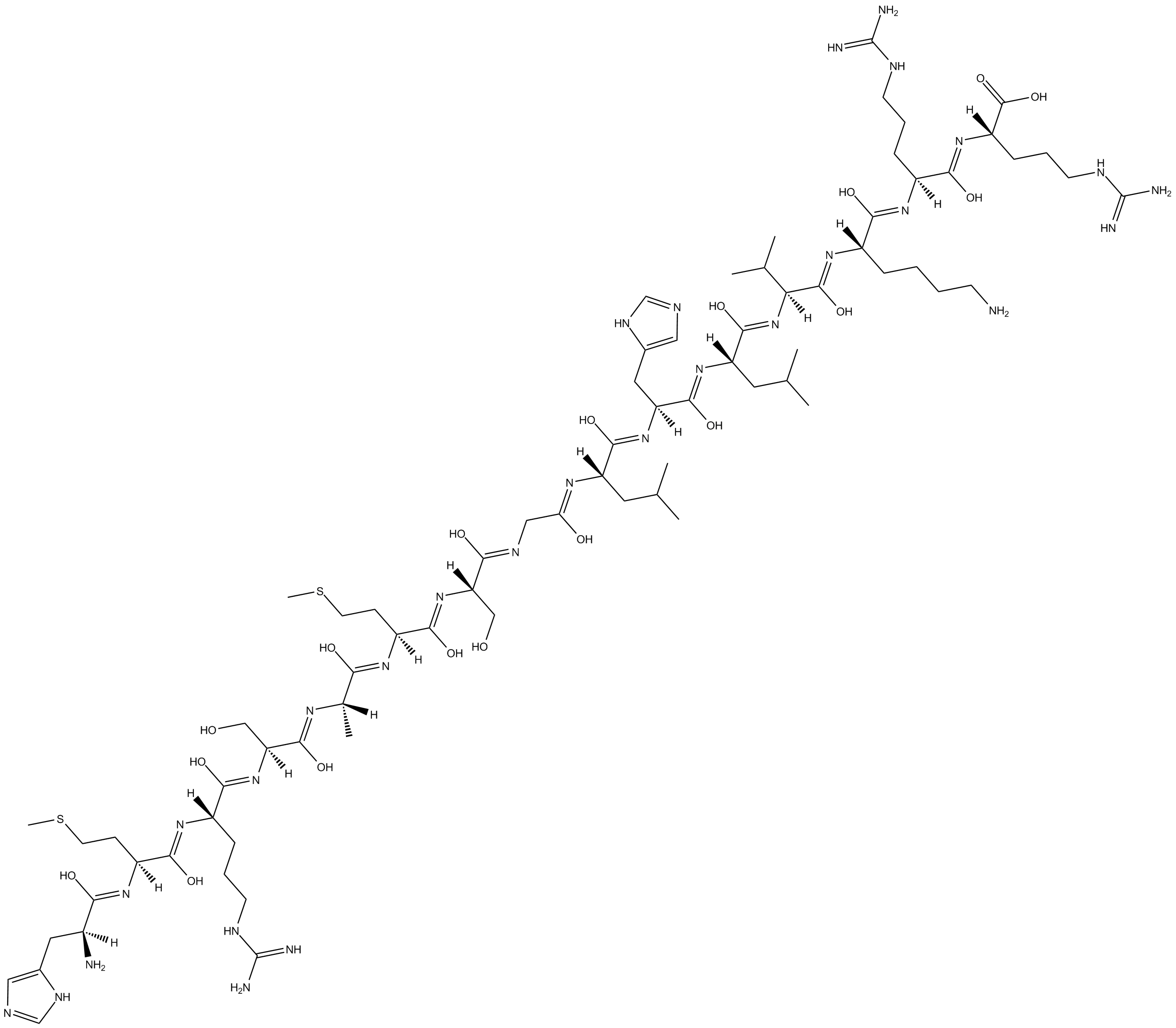
-
GC37694
STO-609
STO-609 ist ein selektiver und zellgÄngiger Inhibitor der Ca2+/Calmodulin-abhÄngigen Proteinkinase-Kinase (CaM-KK) mit Ki-Werten von 80 und 15 ng/ml fÜr rekombinantes CaM-KKα und CaM-KKβ , beziehungsweise.
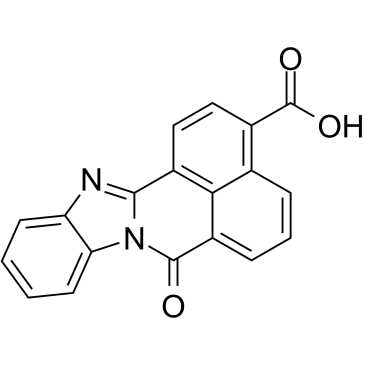
-
GC38679
Urolithin B
Urolithin B ist einer der mikrobiellen Metaboliten von Ellagitanninen im Darm und hat entzÜndungshemmende und antioxidative Wirkungen.
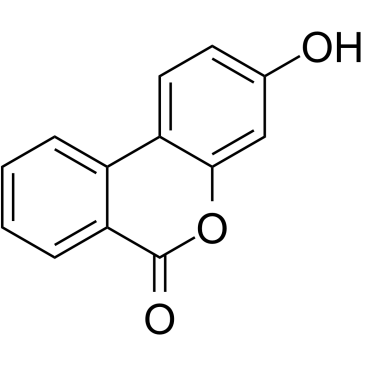
-
GC16549
WZ4003
WZ4003 ist der erste potente und hochspezifische NUAK-Kinase-Inhibitor mit einem IC50-Wert von 20 nM/100 nM fÜr NUAK1 (ARK5)/NUAK2, ohne signifikante Hemmung anderer 139 Kinasen.
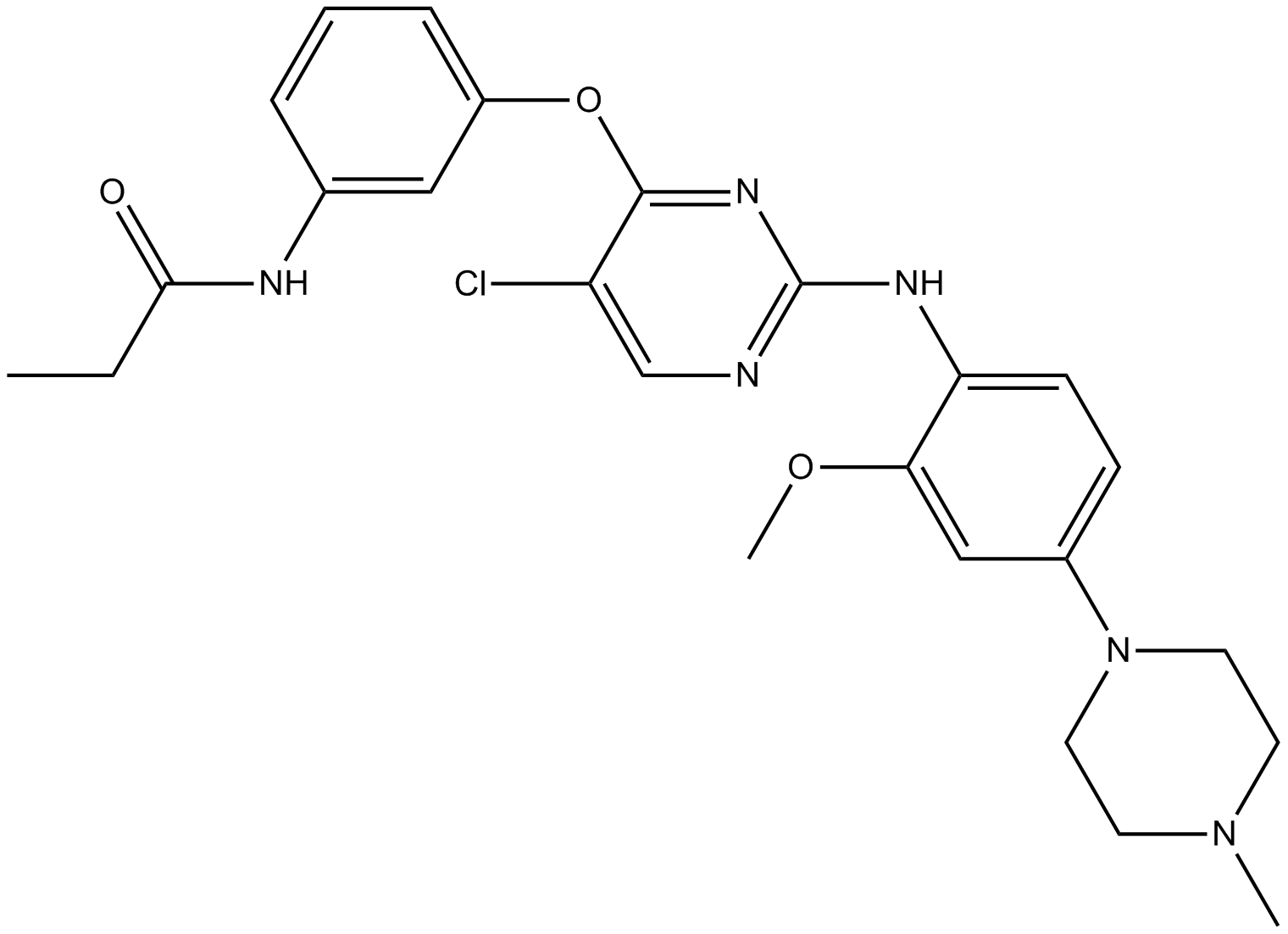
-
GC61382
Xanthoangelol
Xanthoangelol, extrahiert aus Angelica keiskei, unterdrÜckt durch Fettleibigkeit verursachte EntzÜndungsreaktionen.
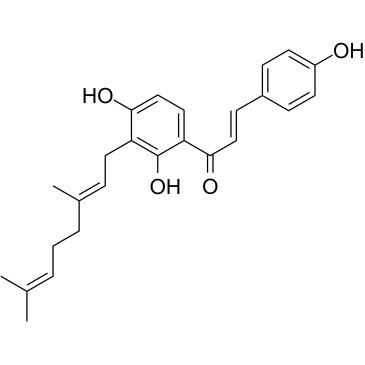
-
GC18208
YLF-466D
YLF-466D ist ein neu entwickelter AMPK-Aktivator, der die Thrombozytenaggregation hemmt.
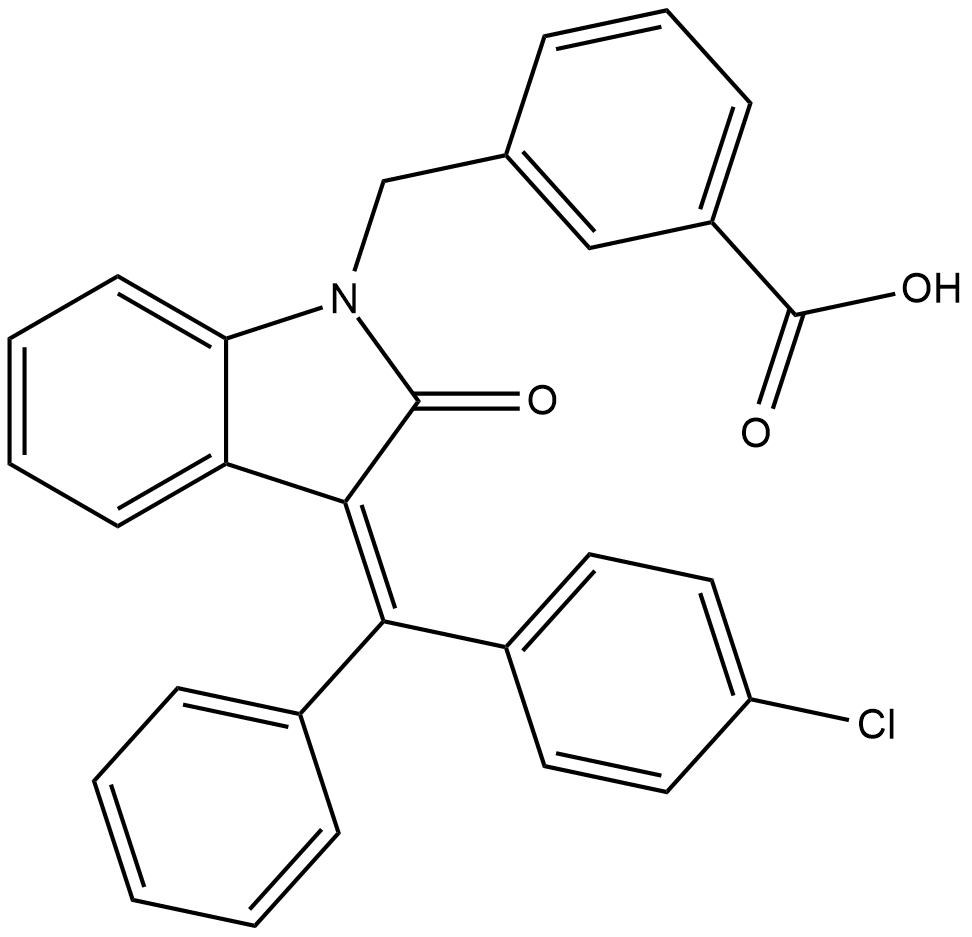
-
GC37970
ZLN024
ZLN024 ist ein allosterischer AMPK-Aktivator.
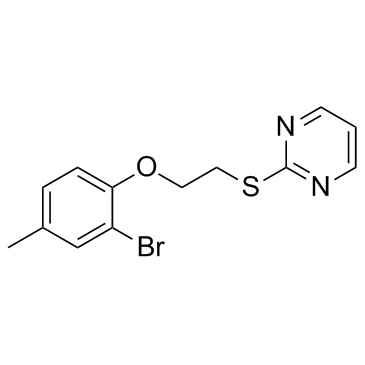
-
GC12162
ZLN024 hydrochloride
ZLN024-Hydrochlorid ist ein allosterischer AMPK-Aktivator.



